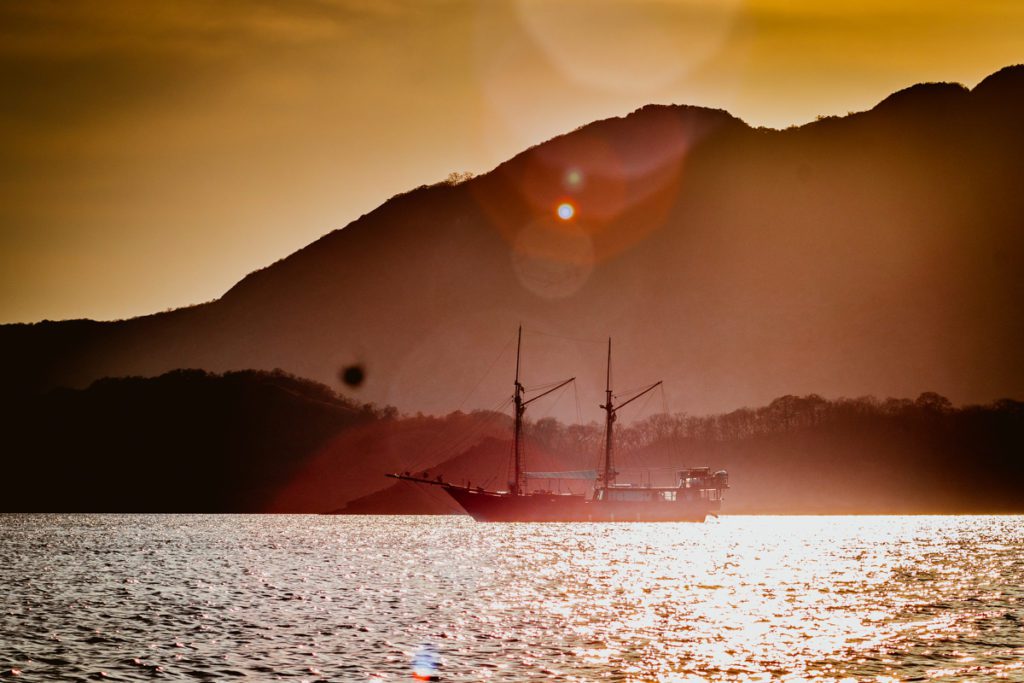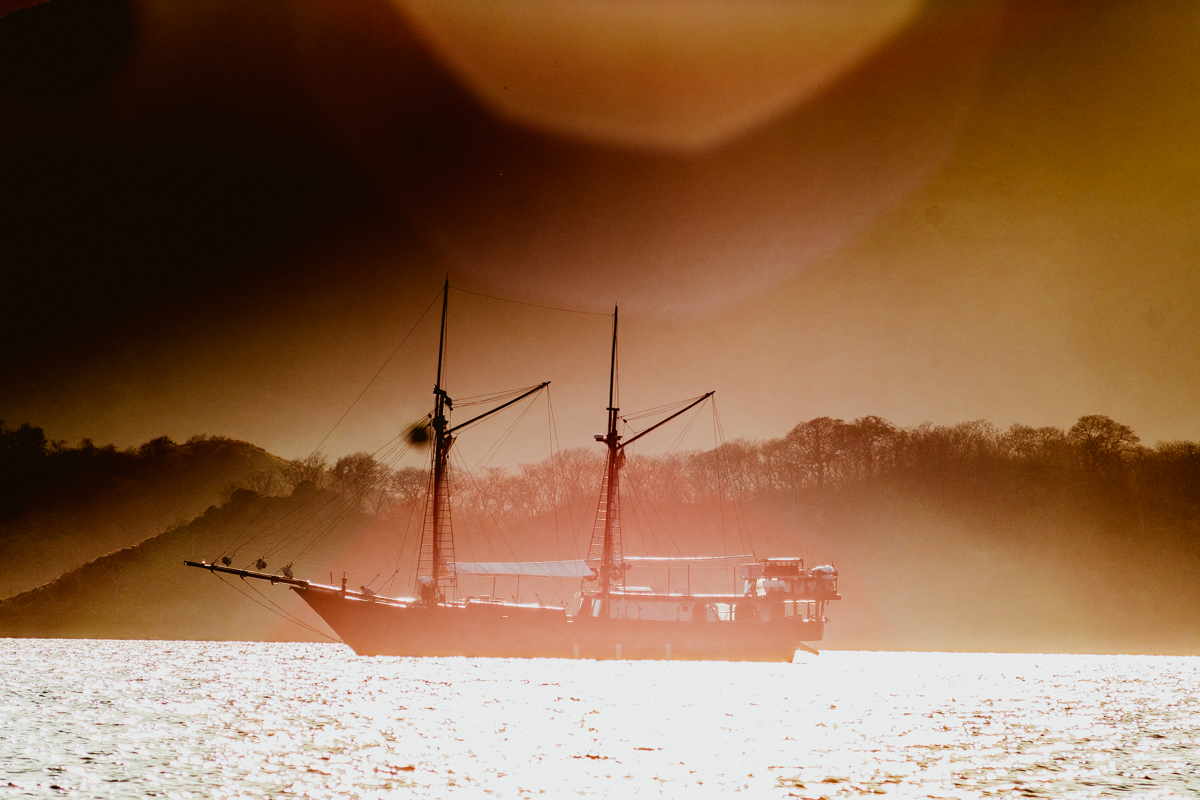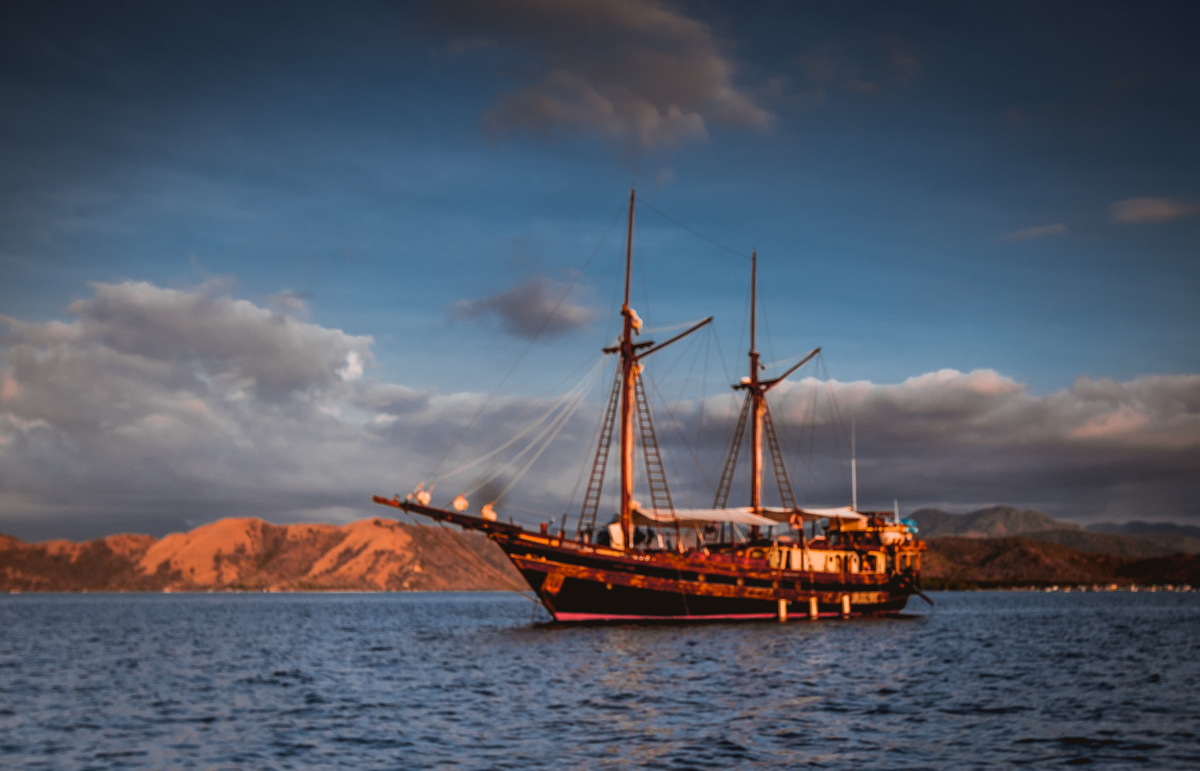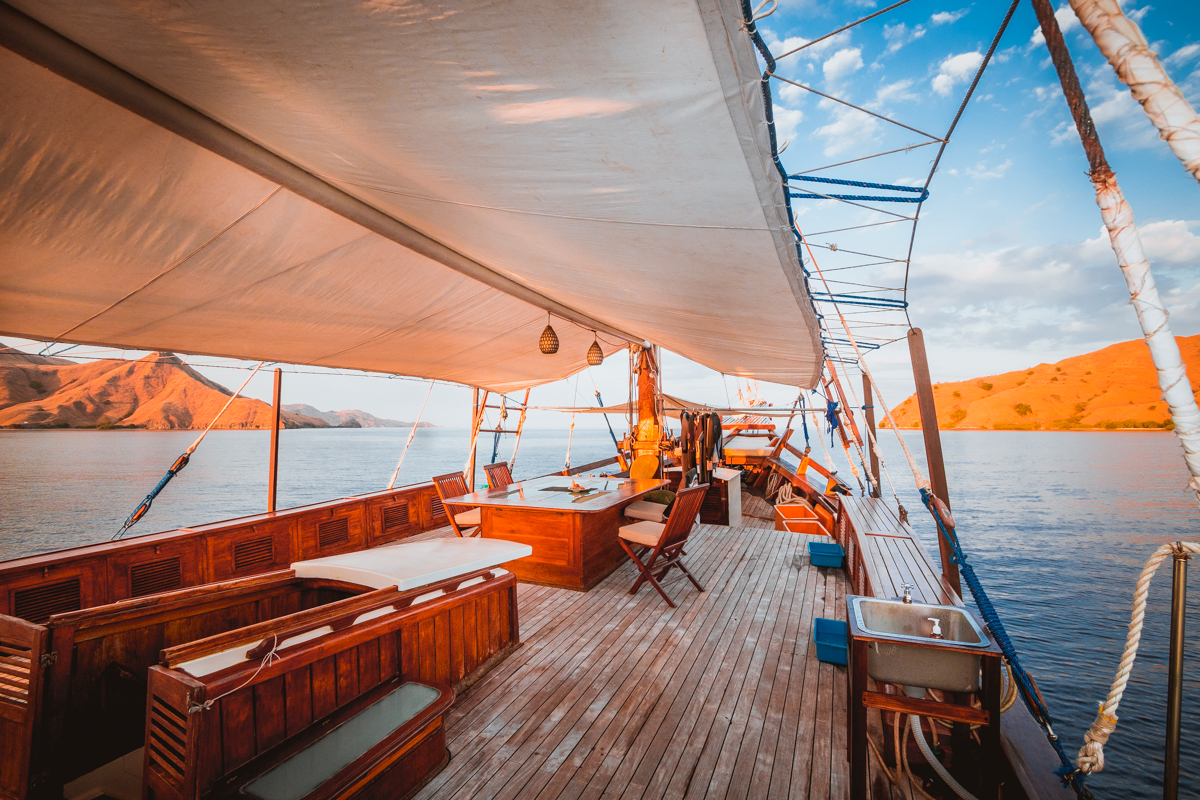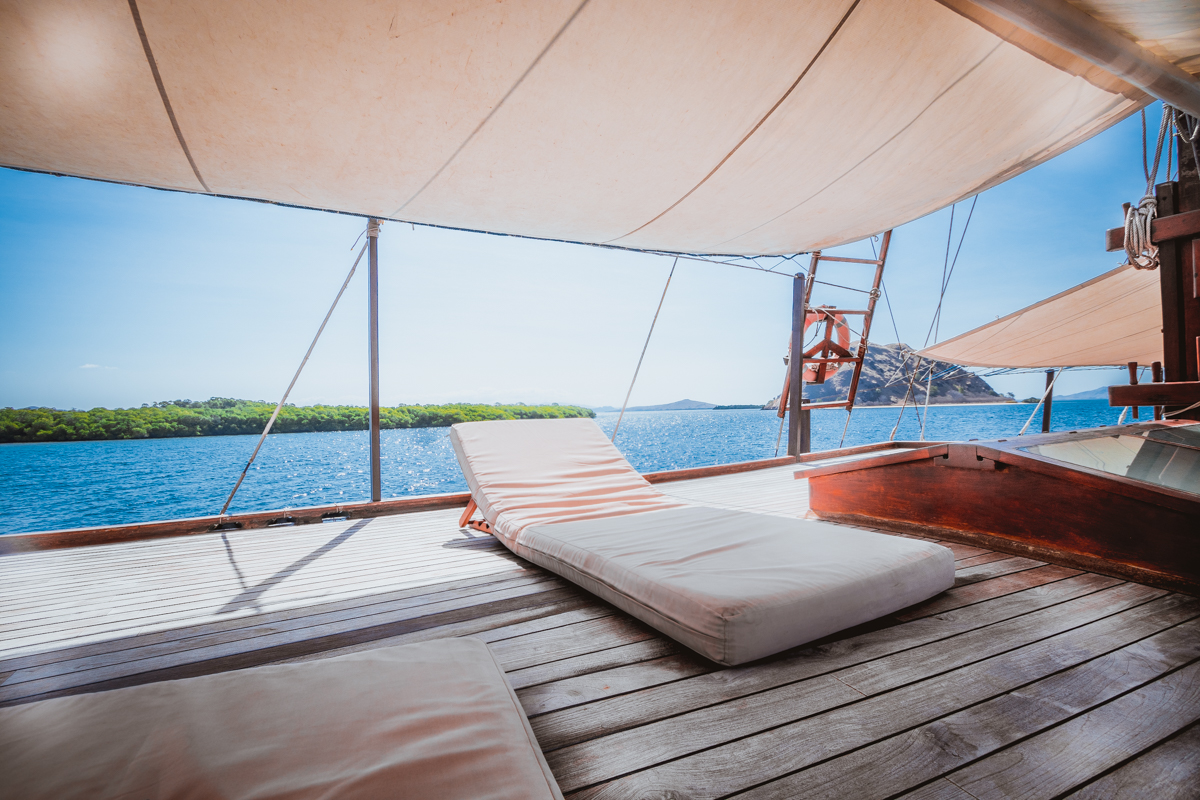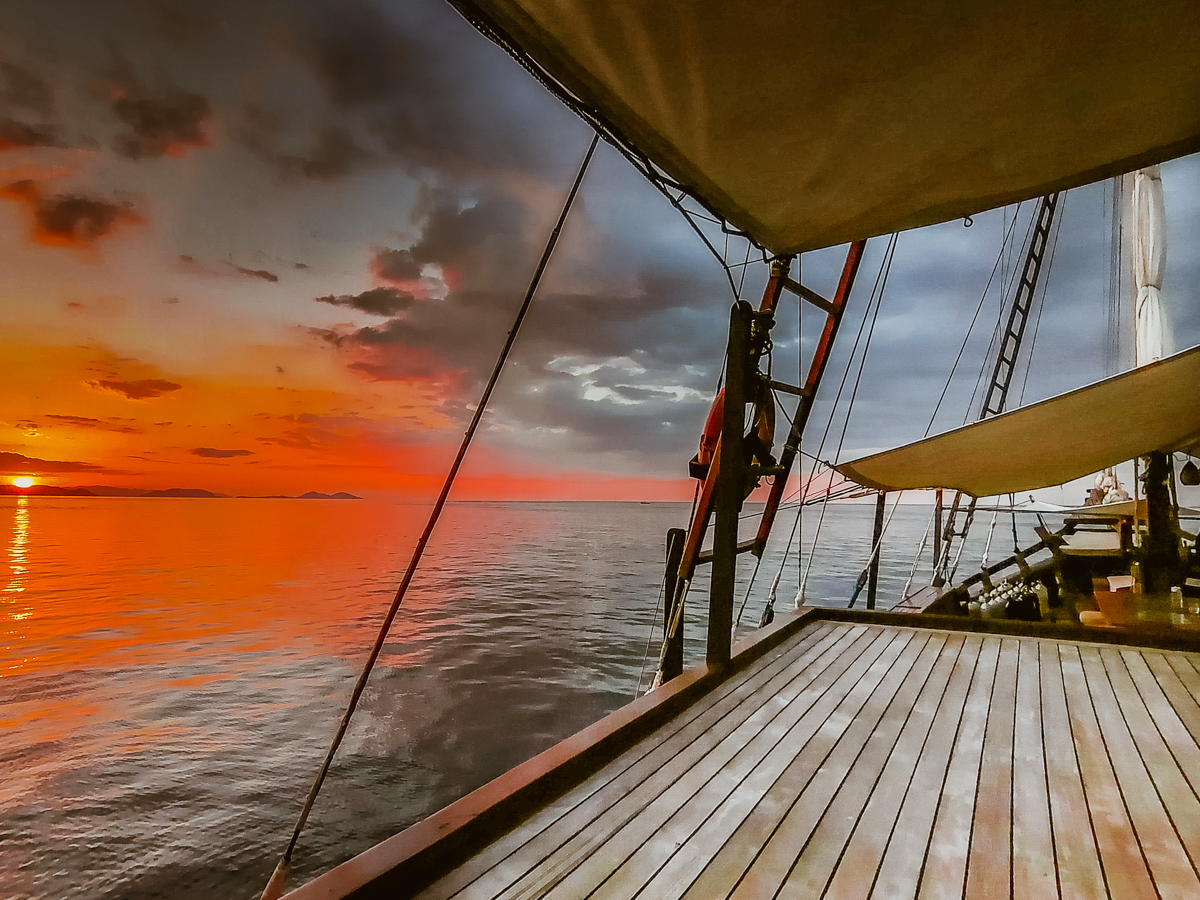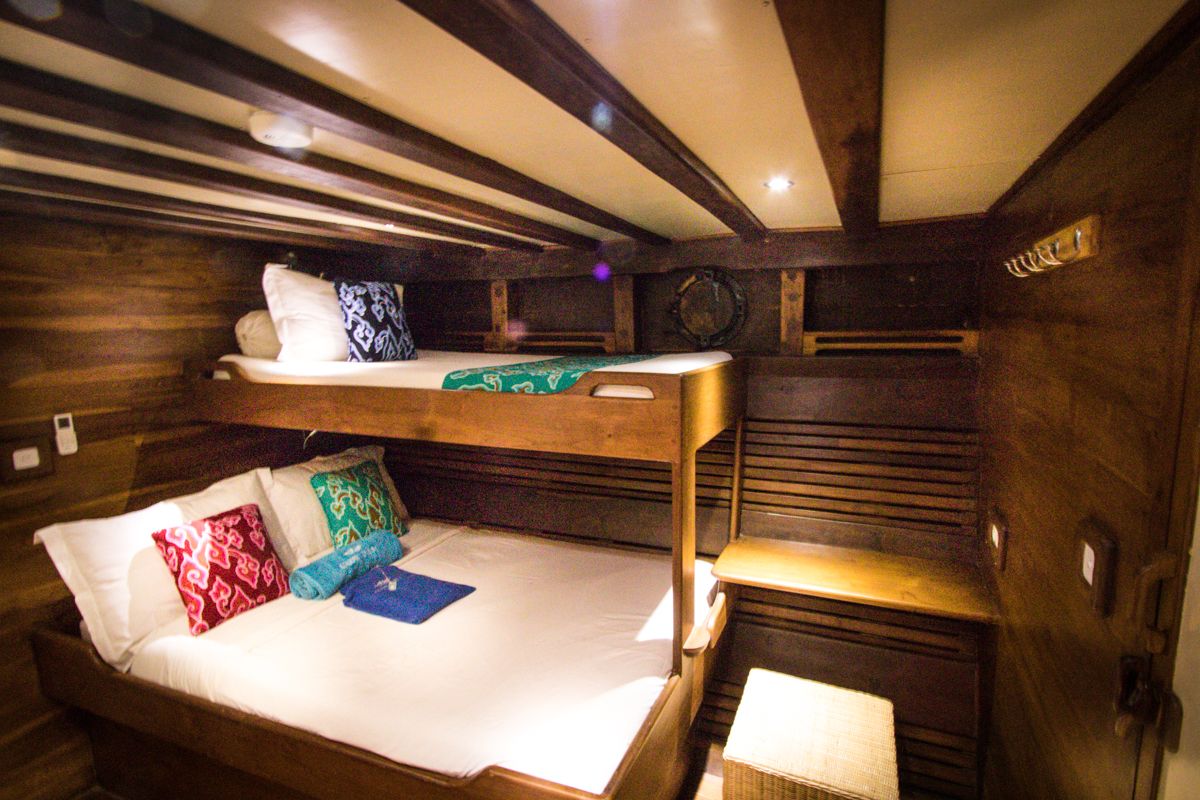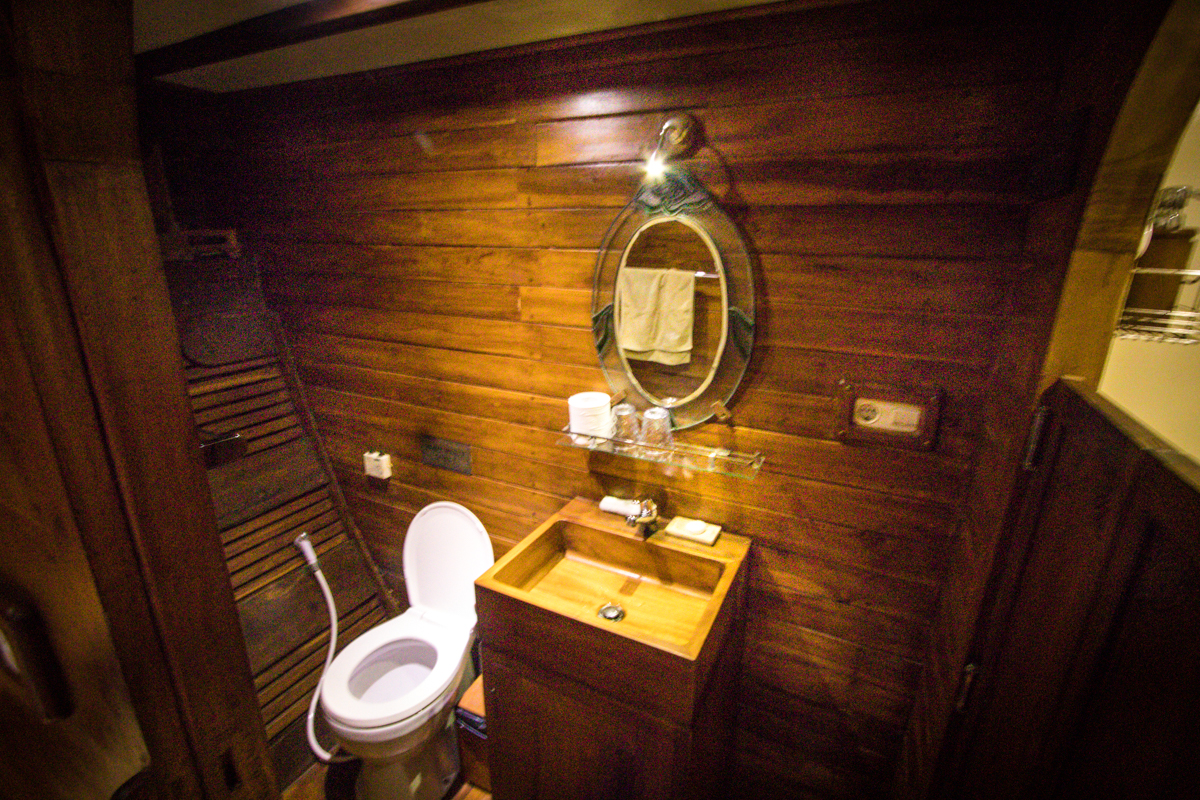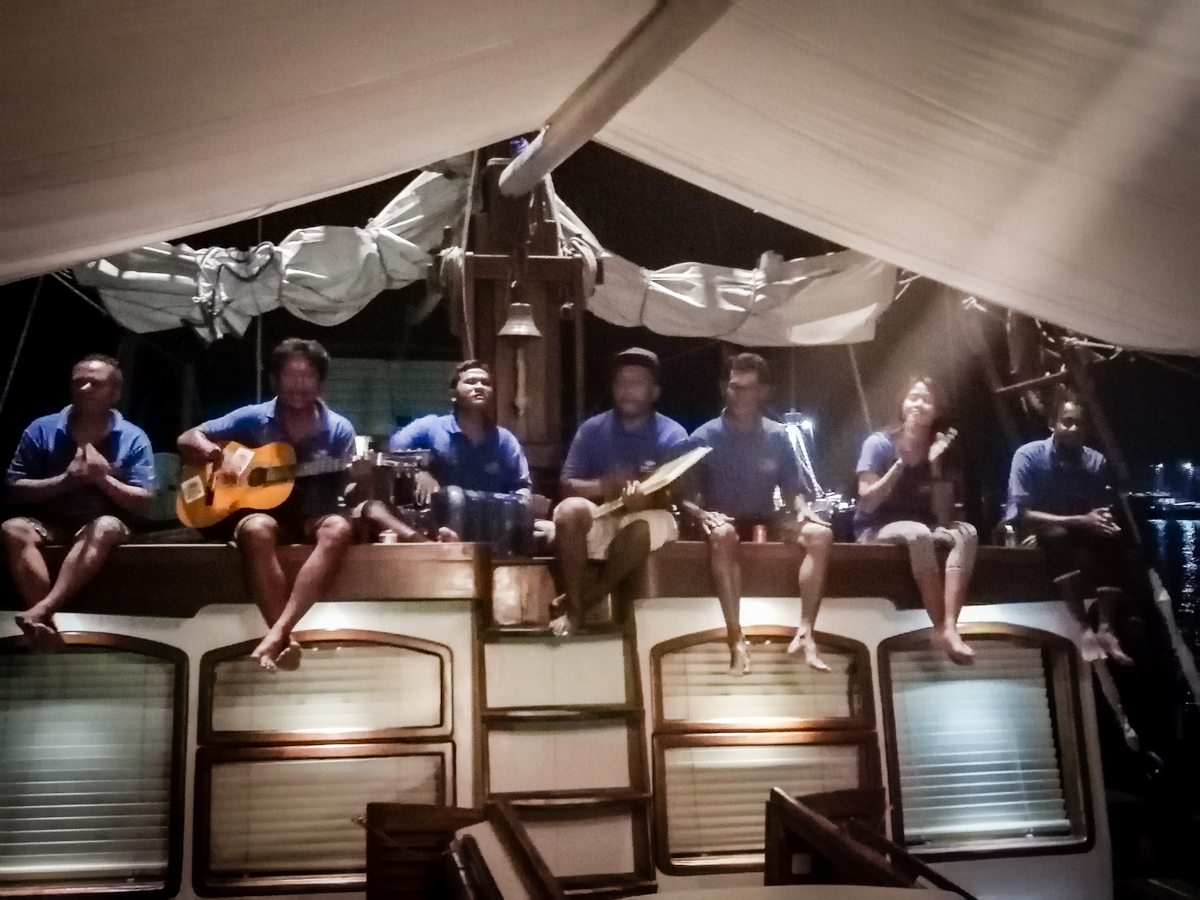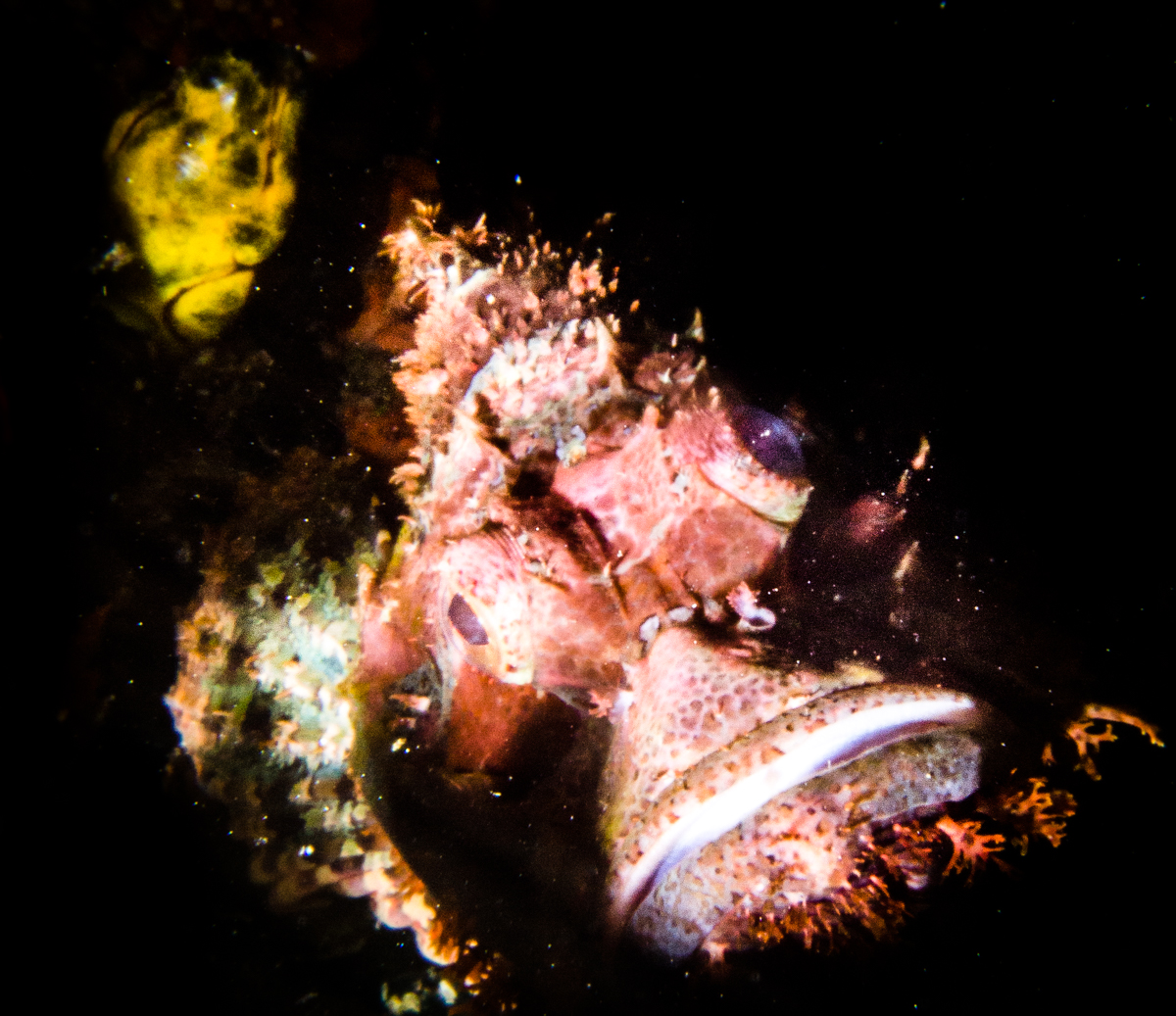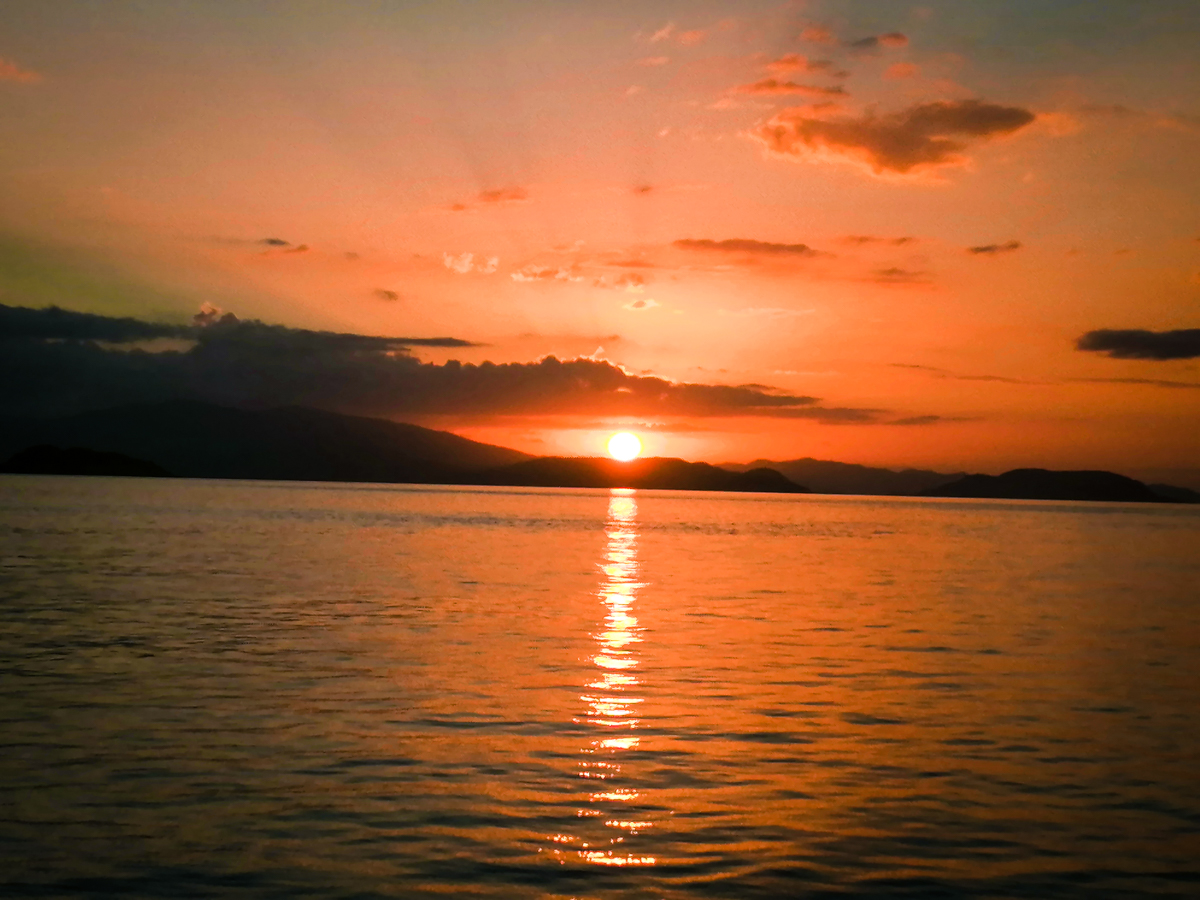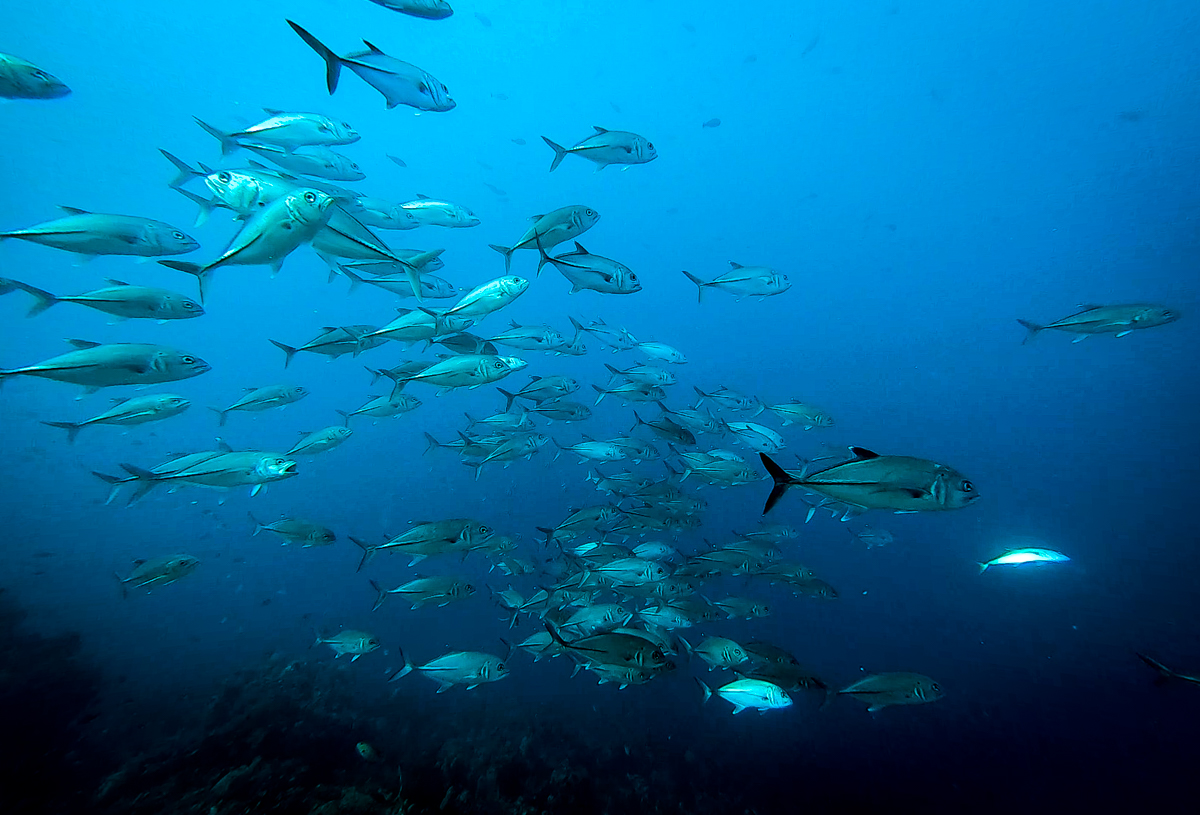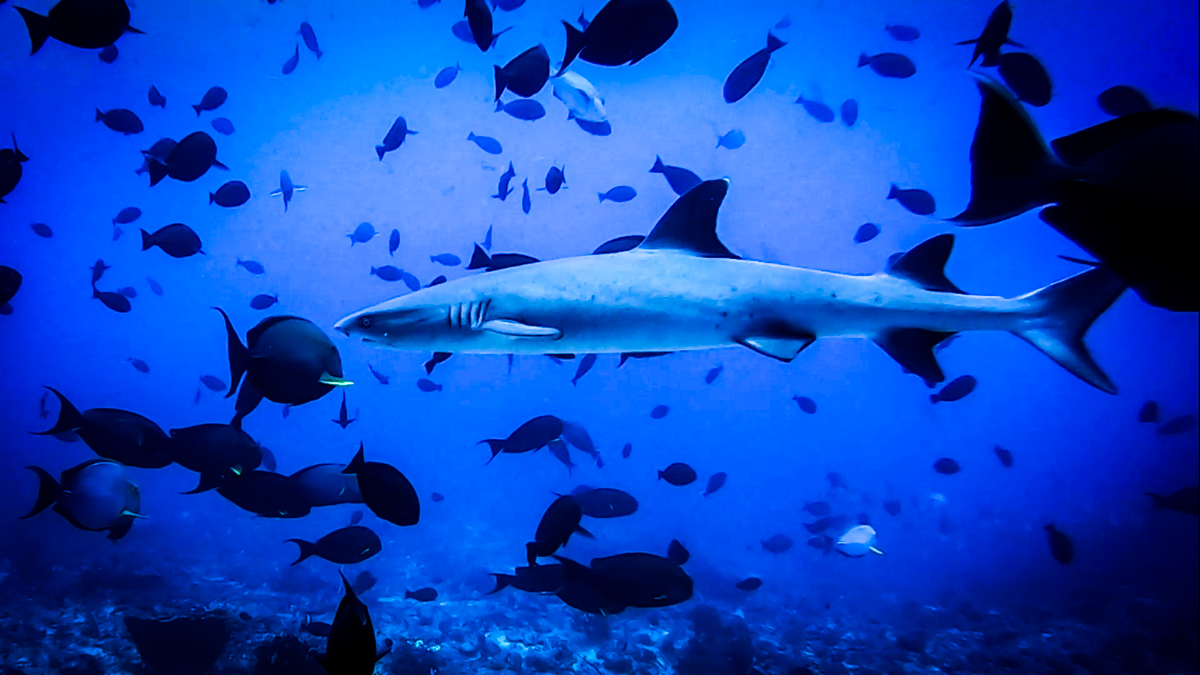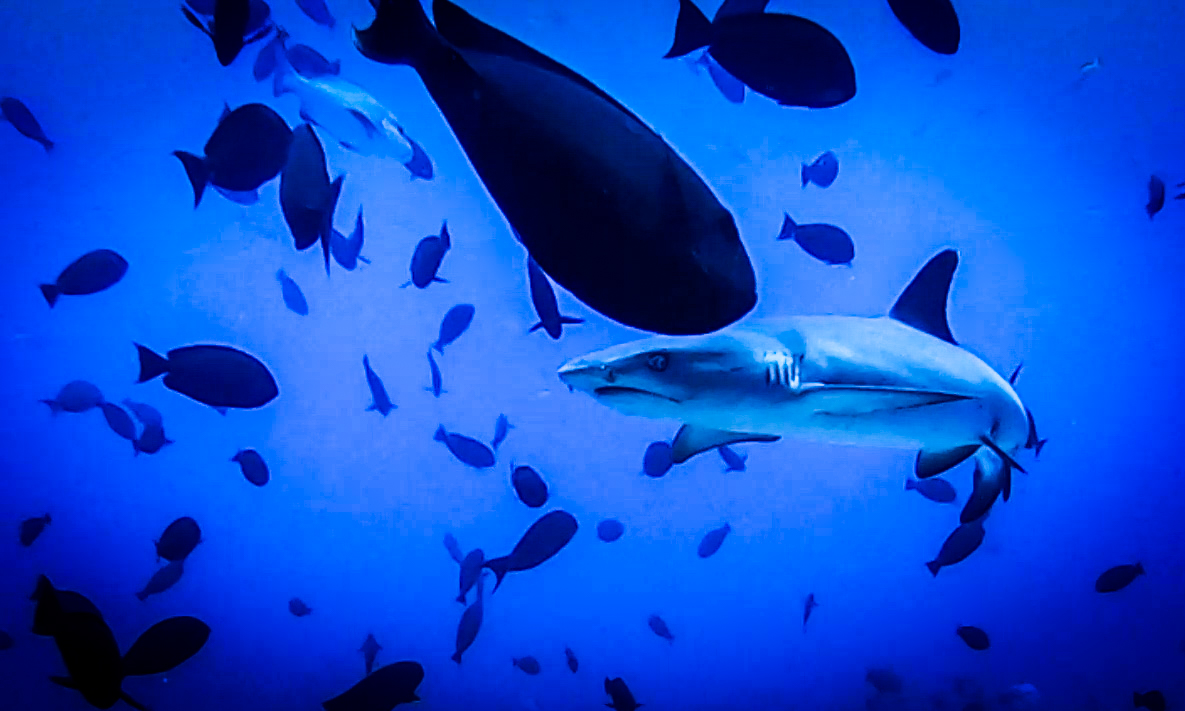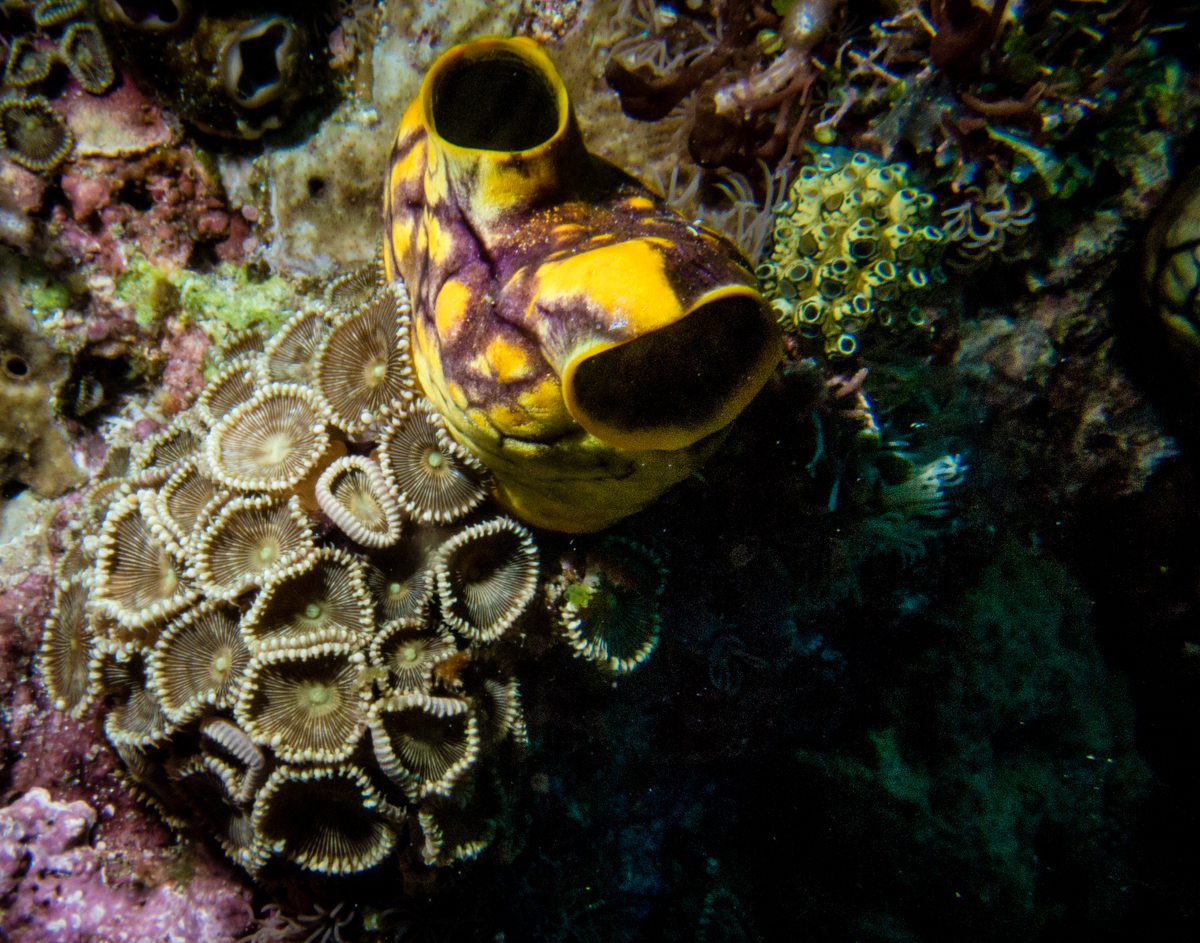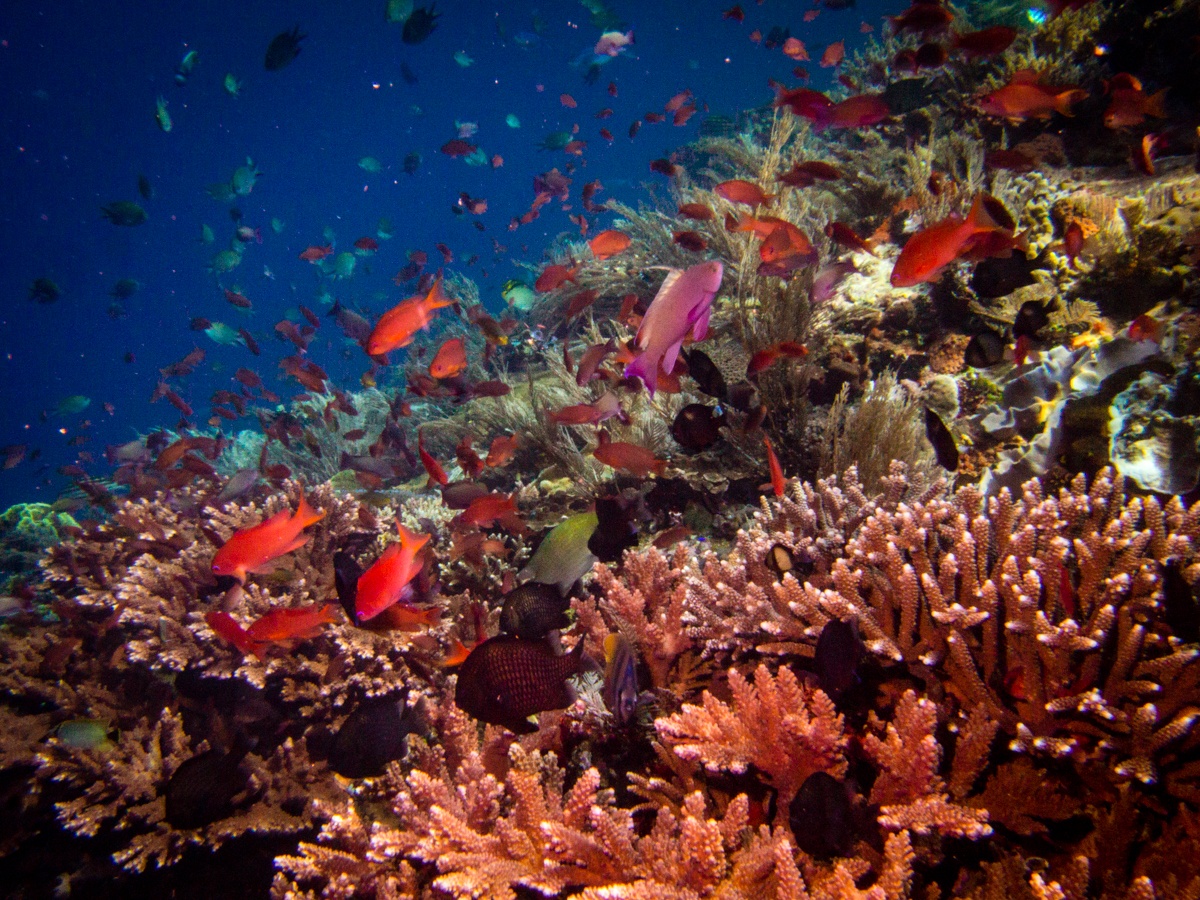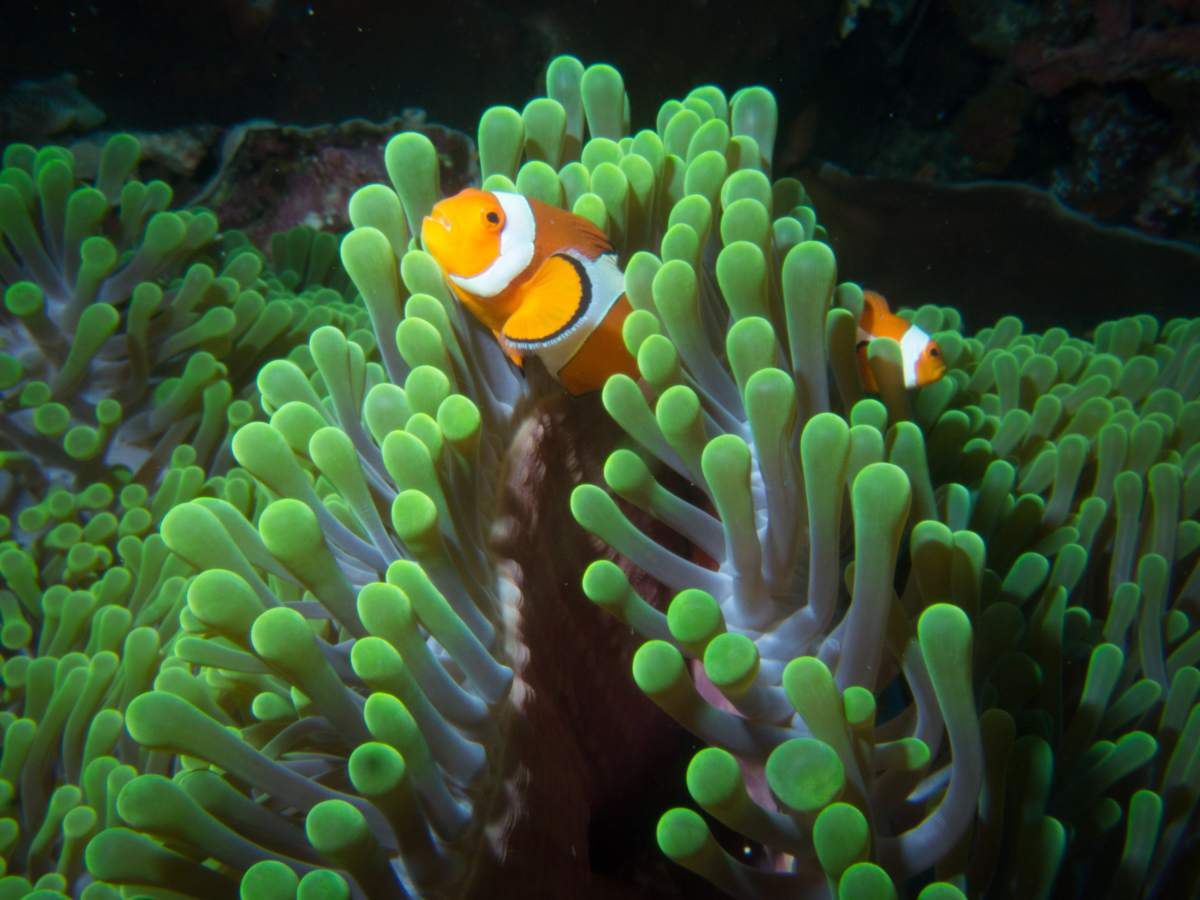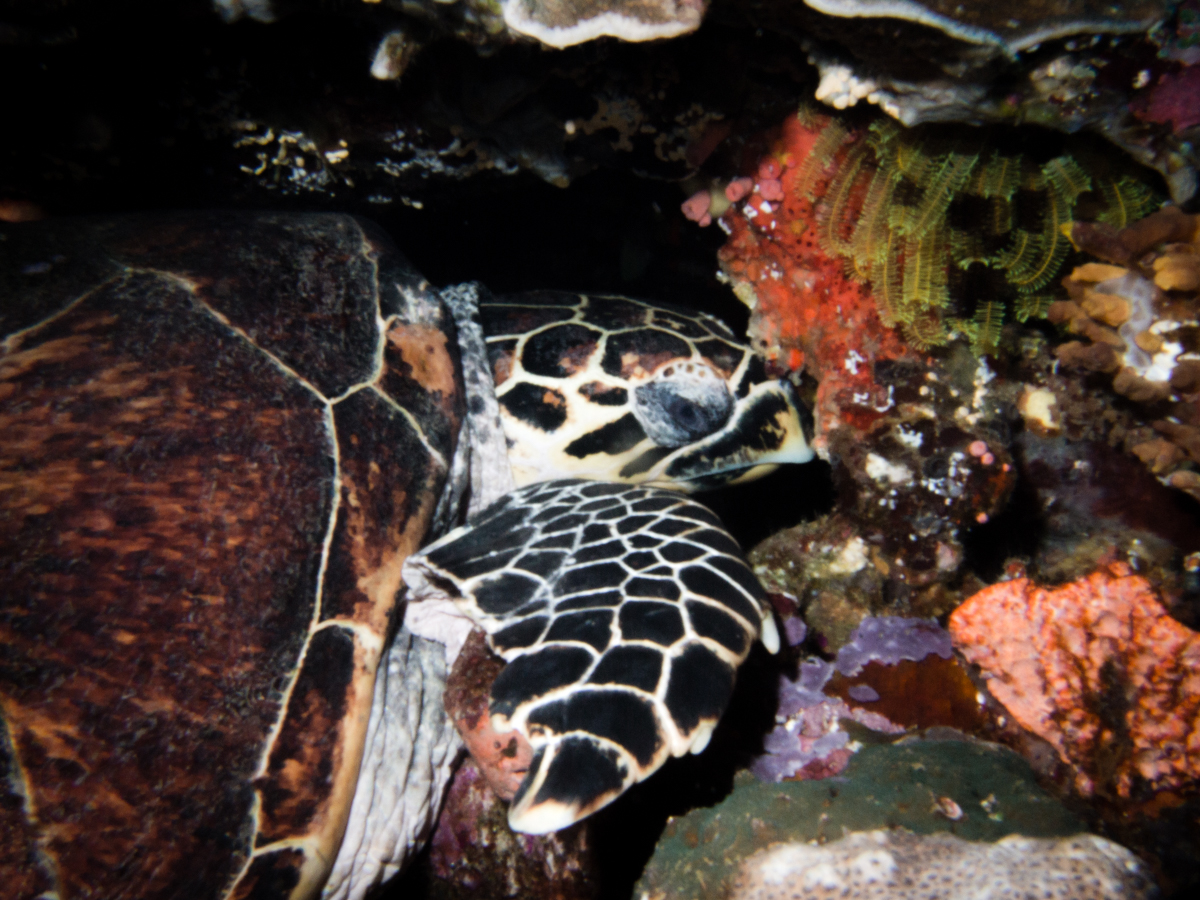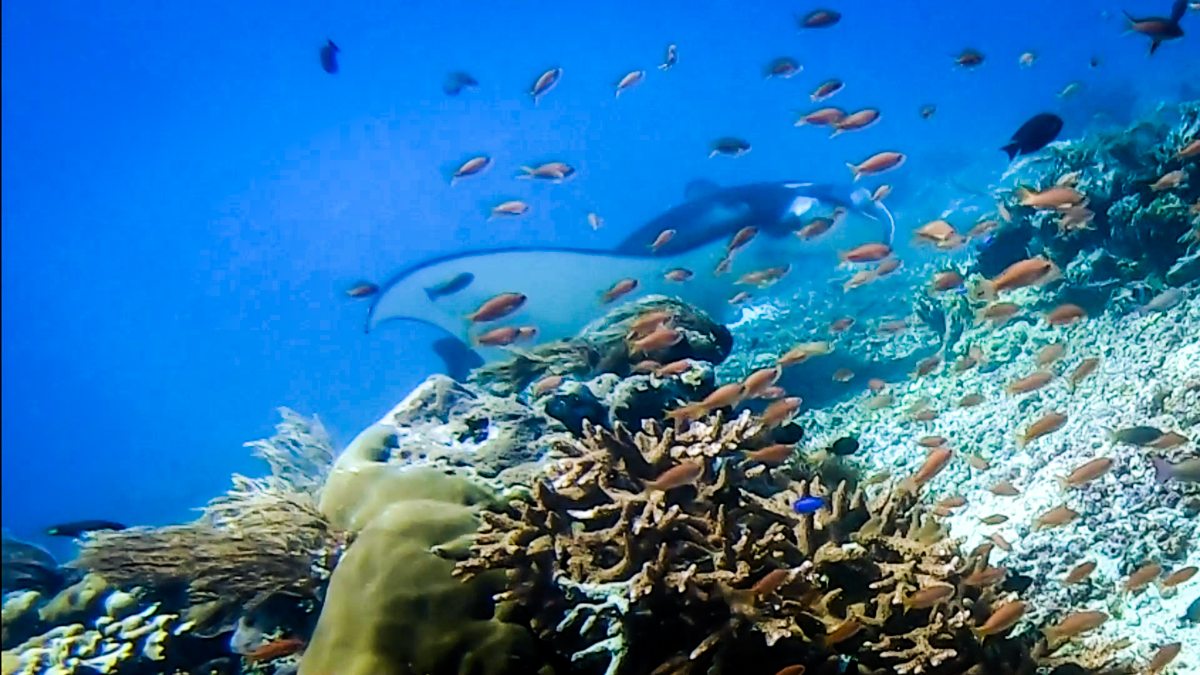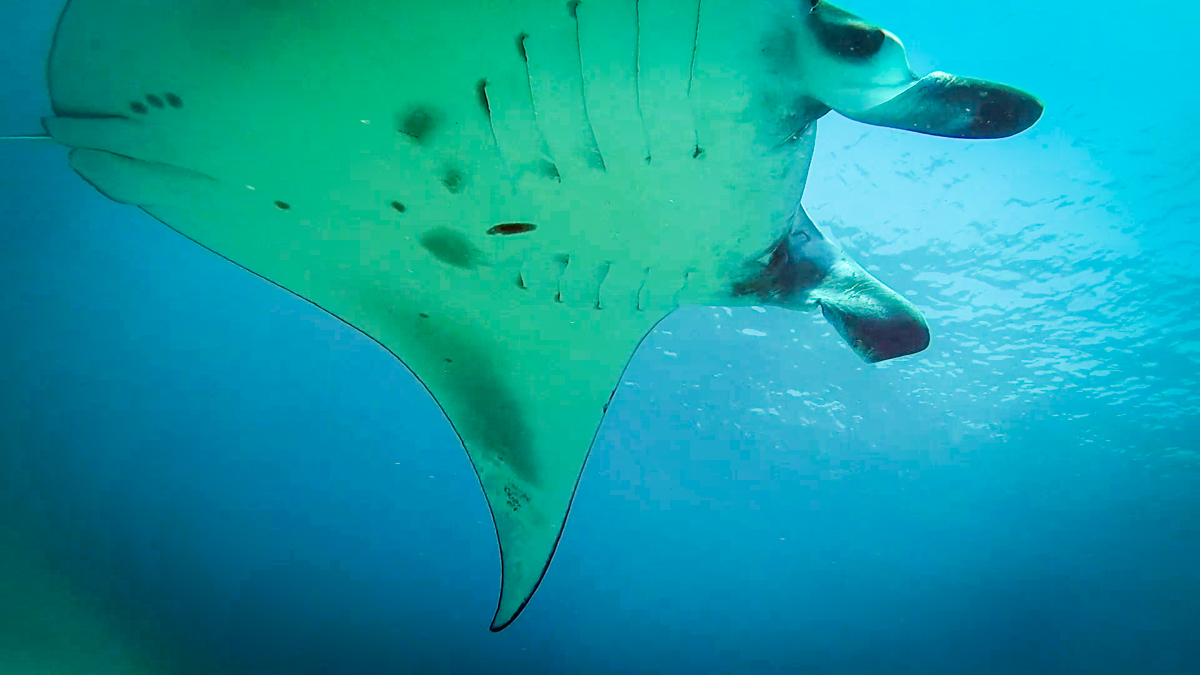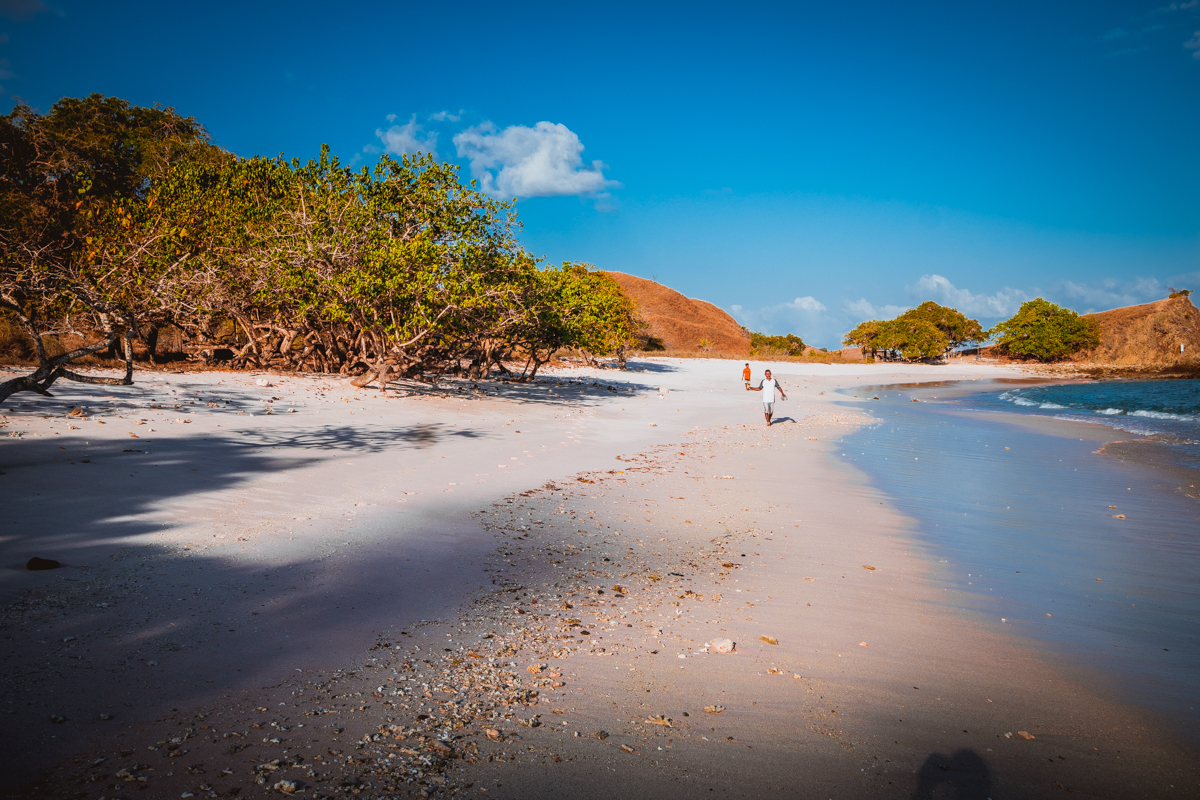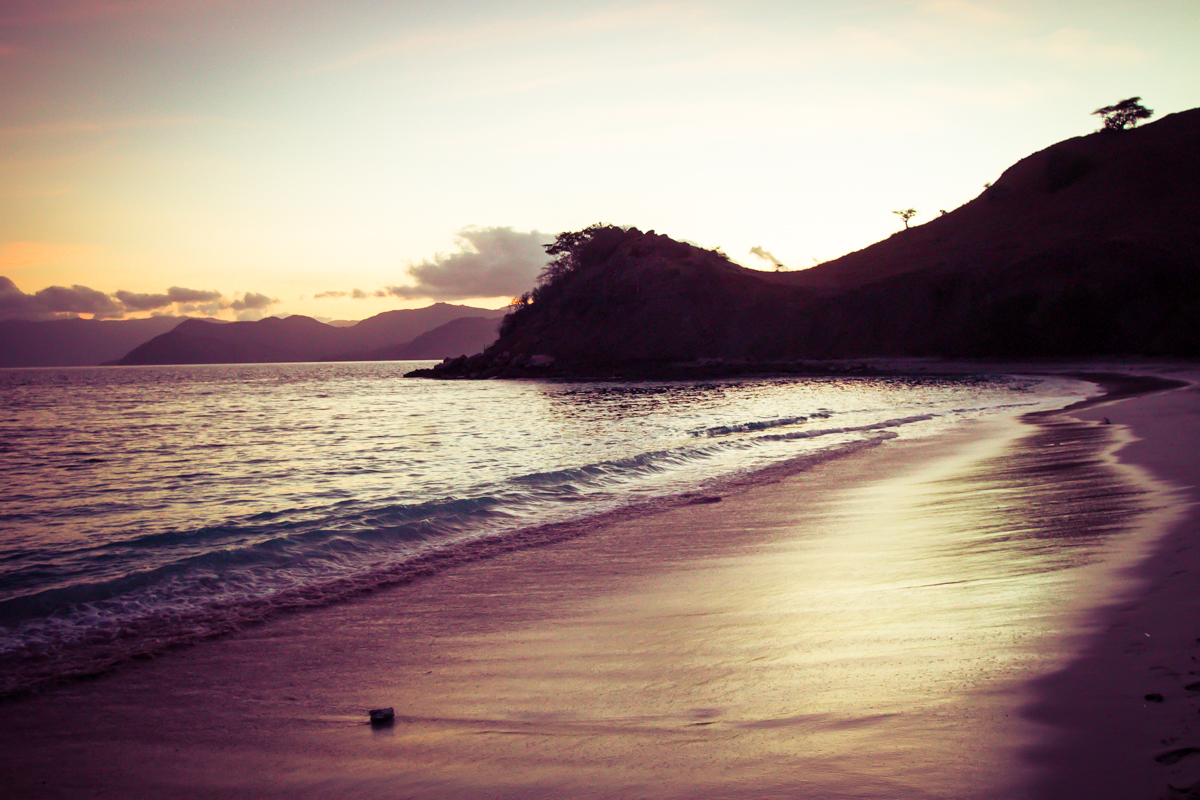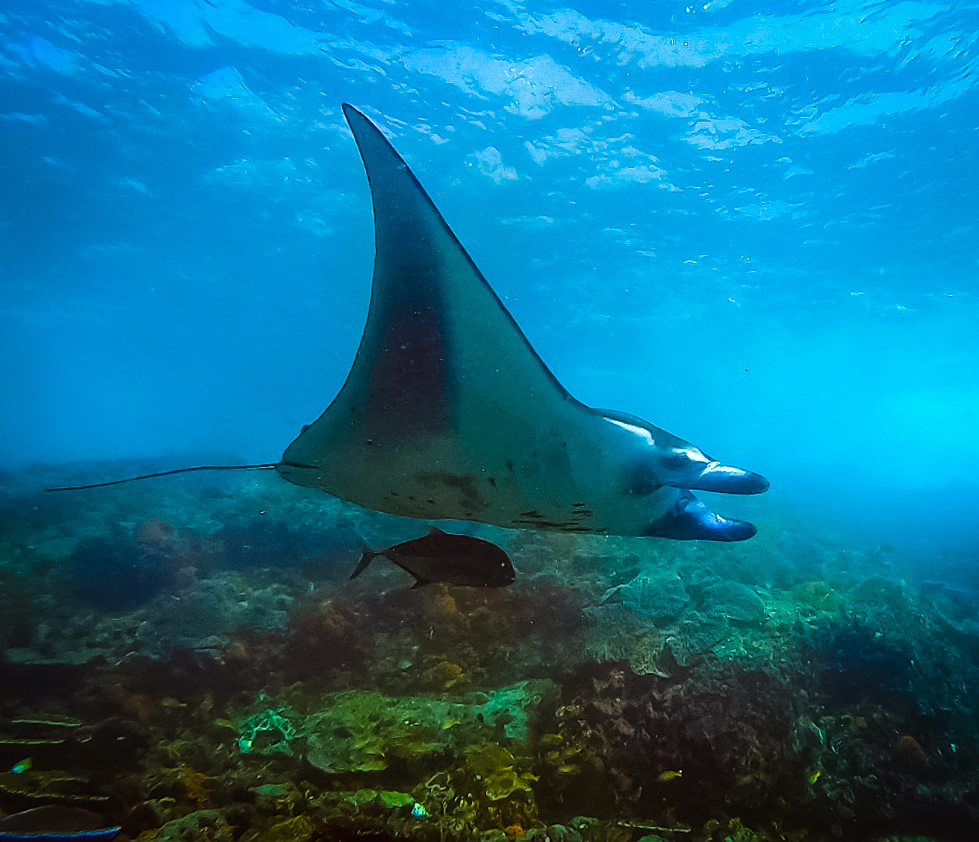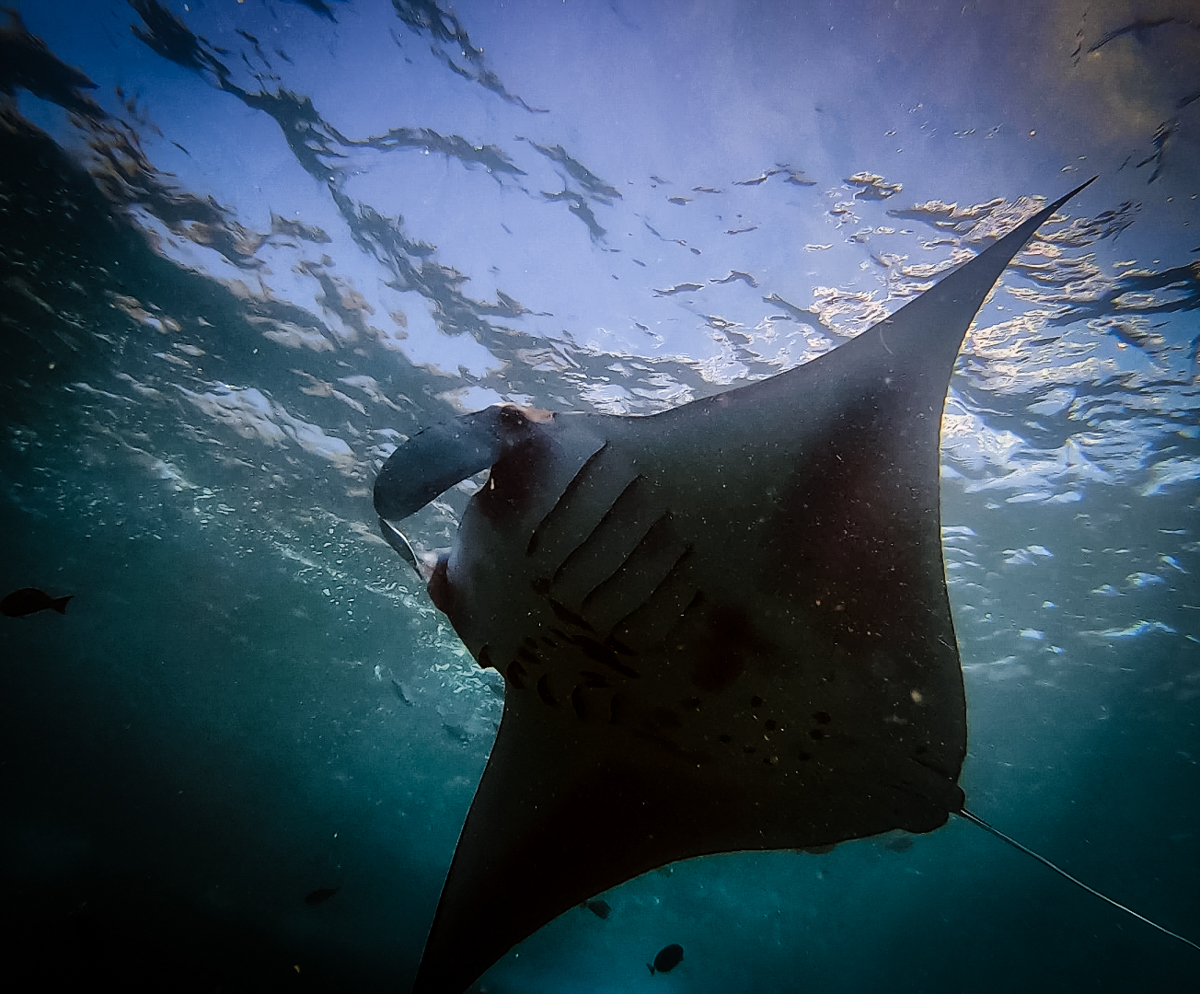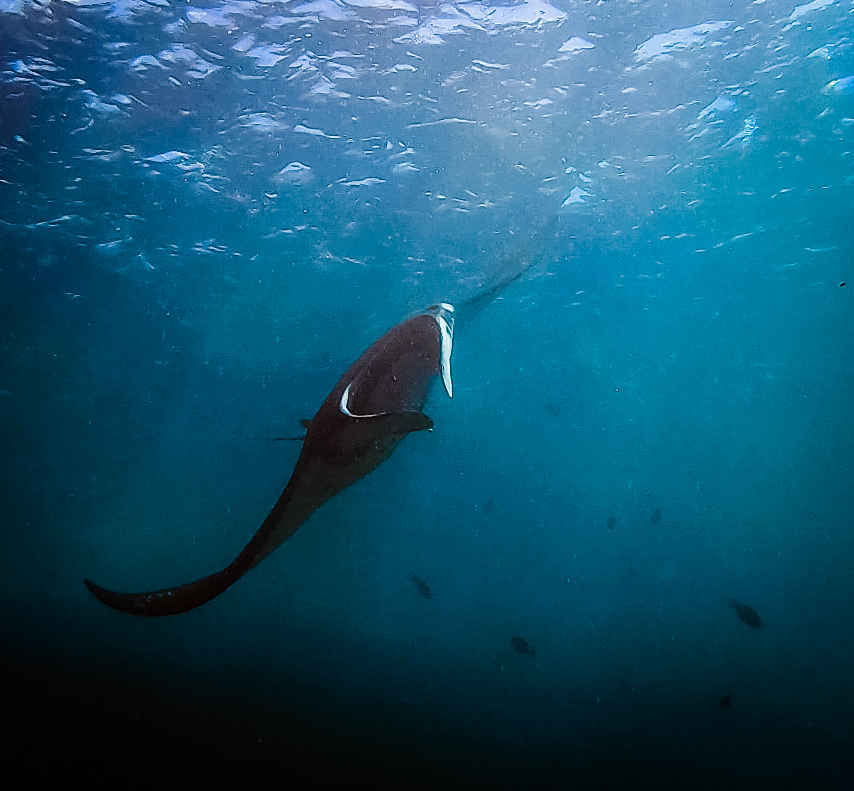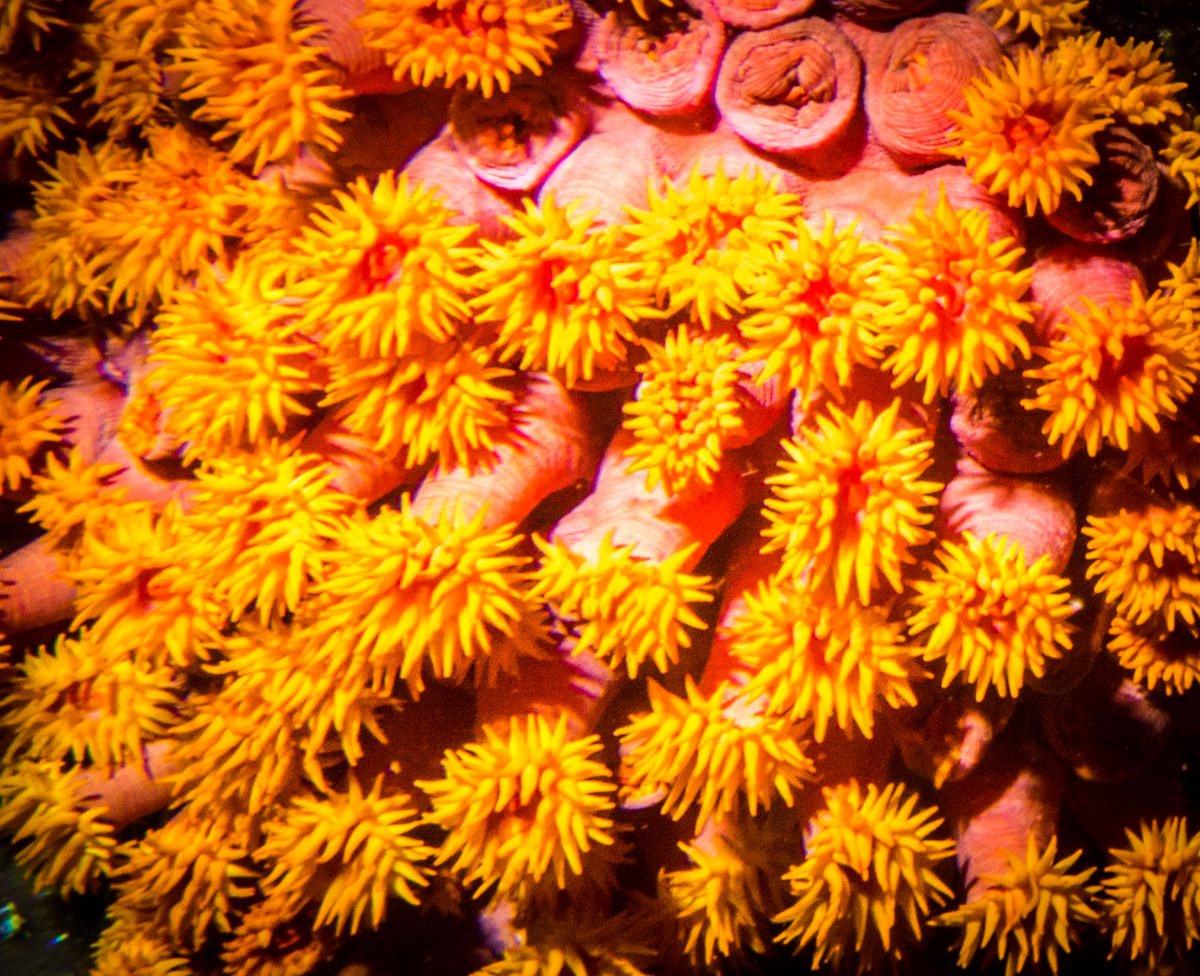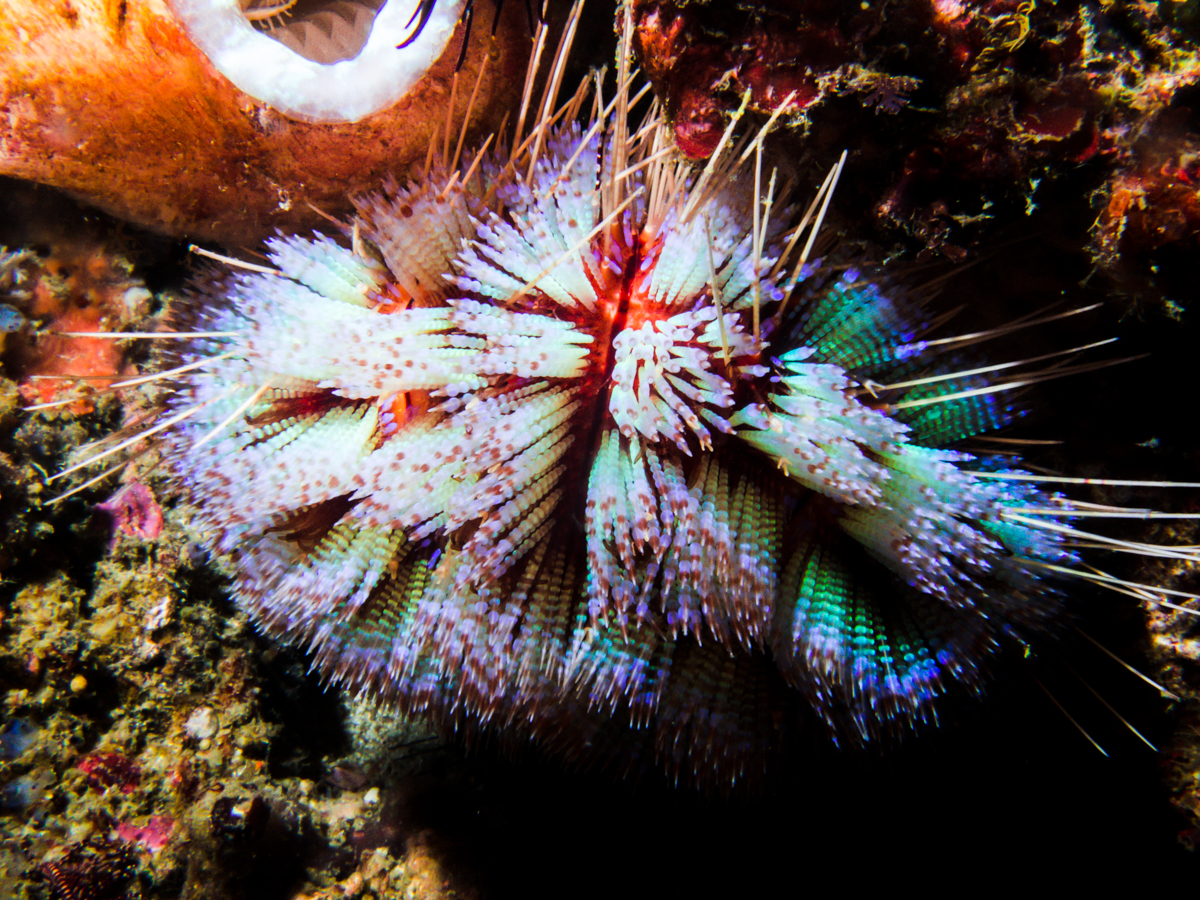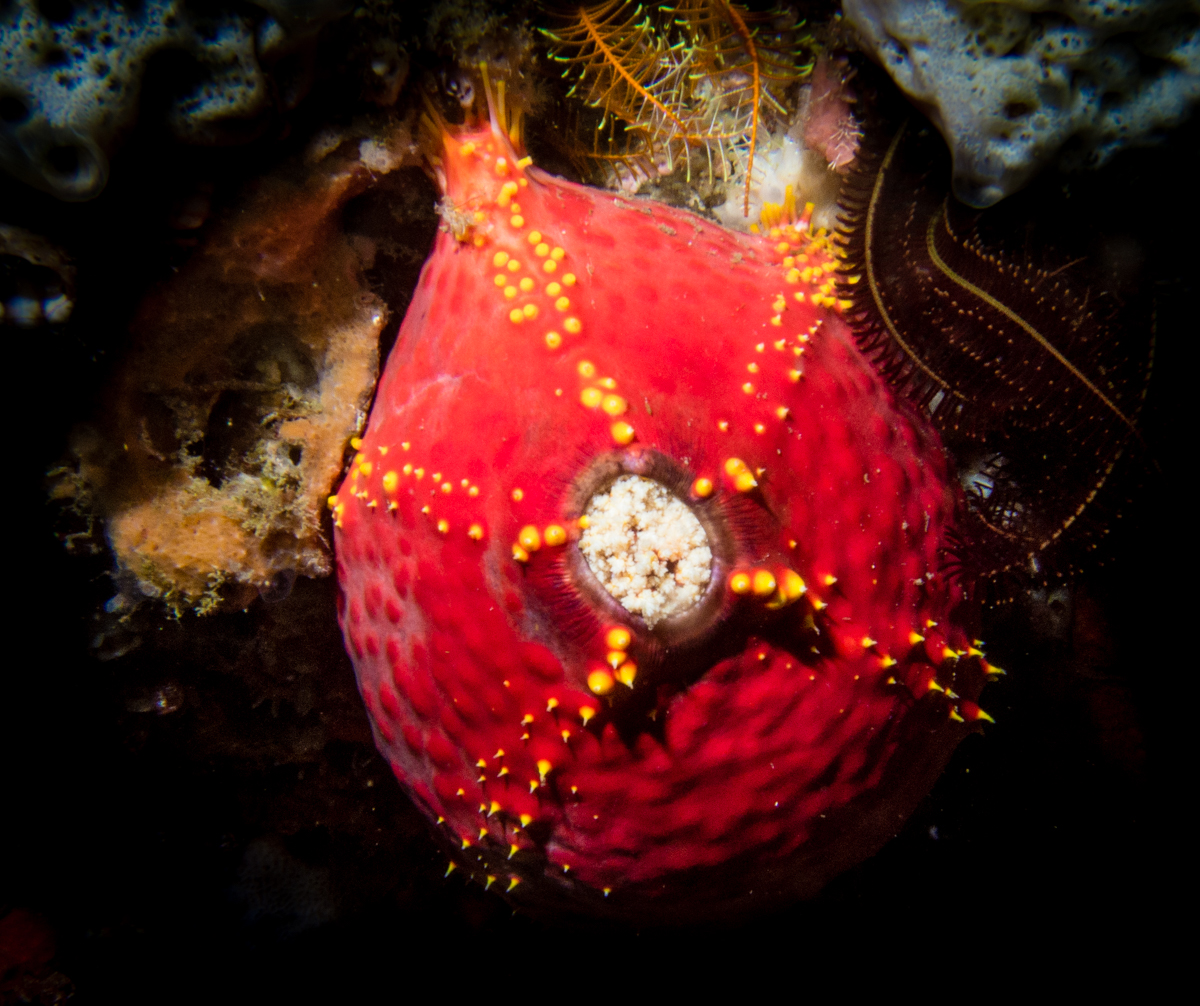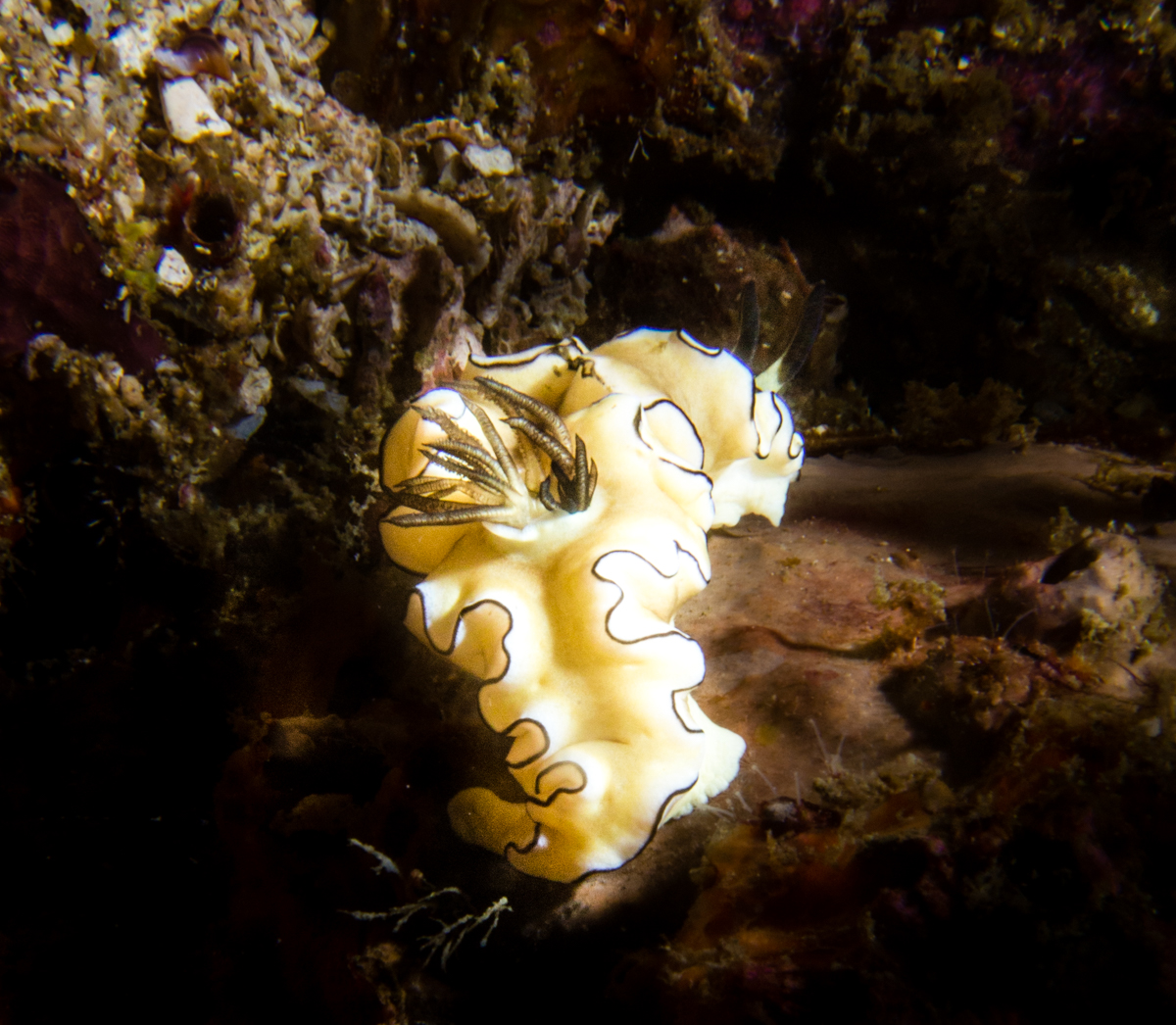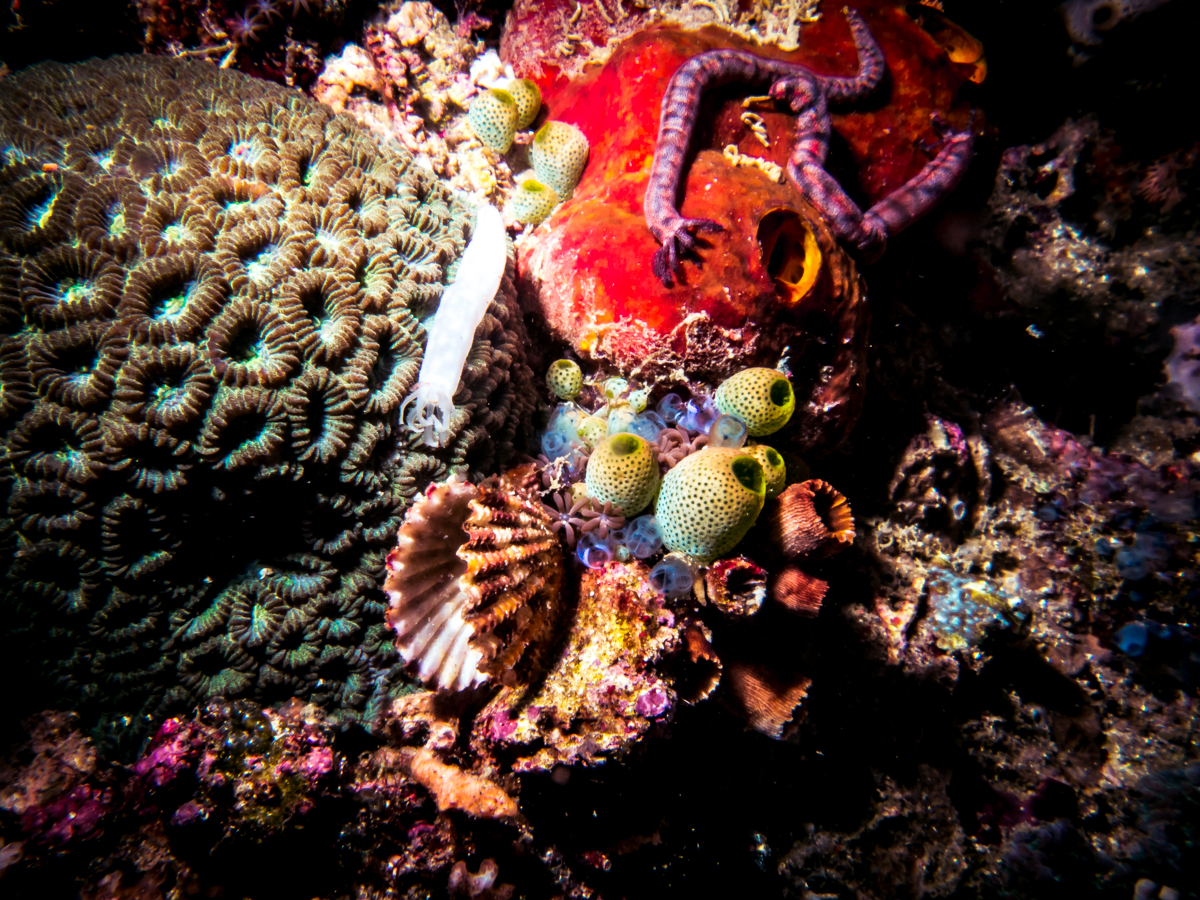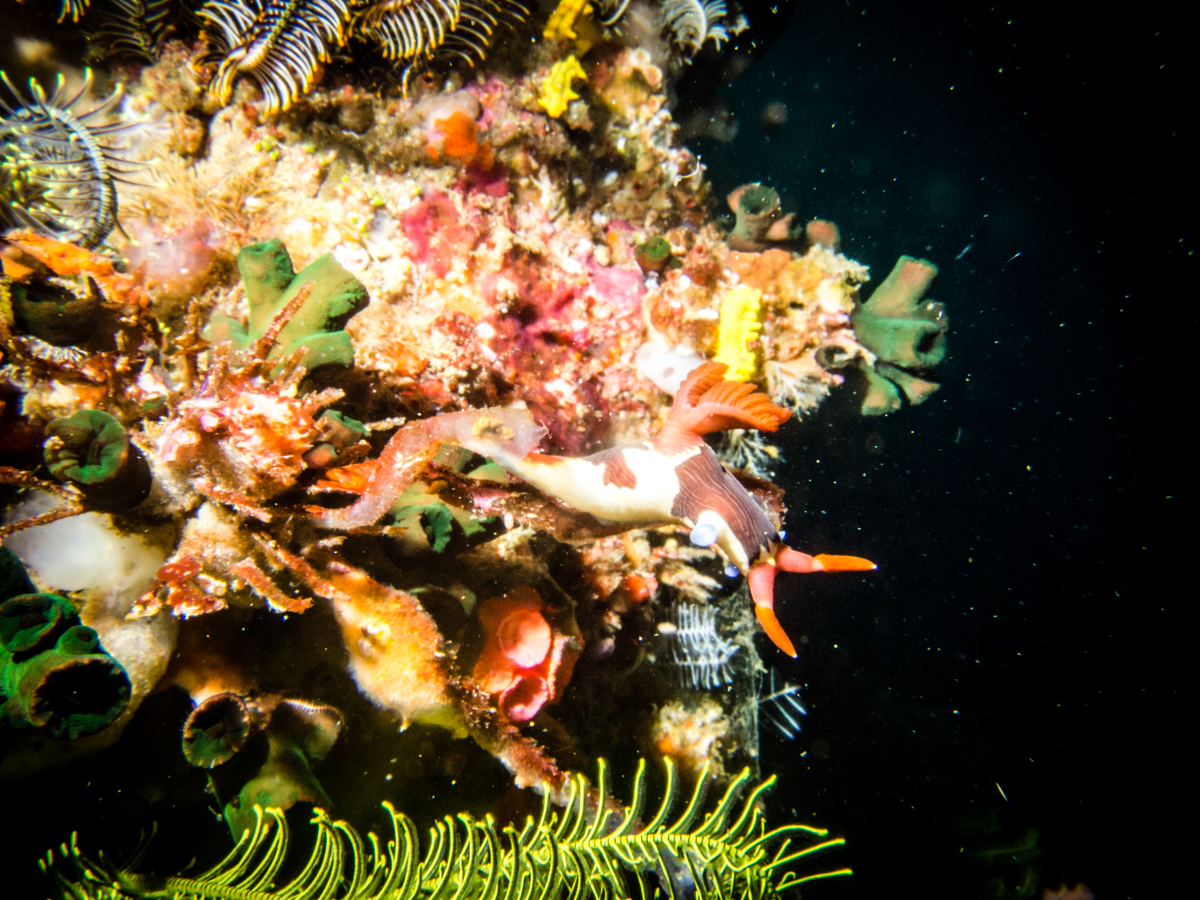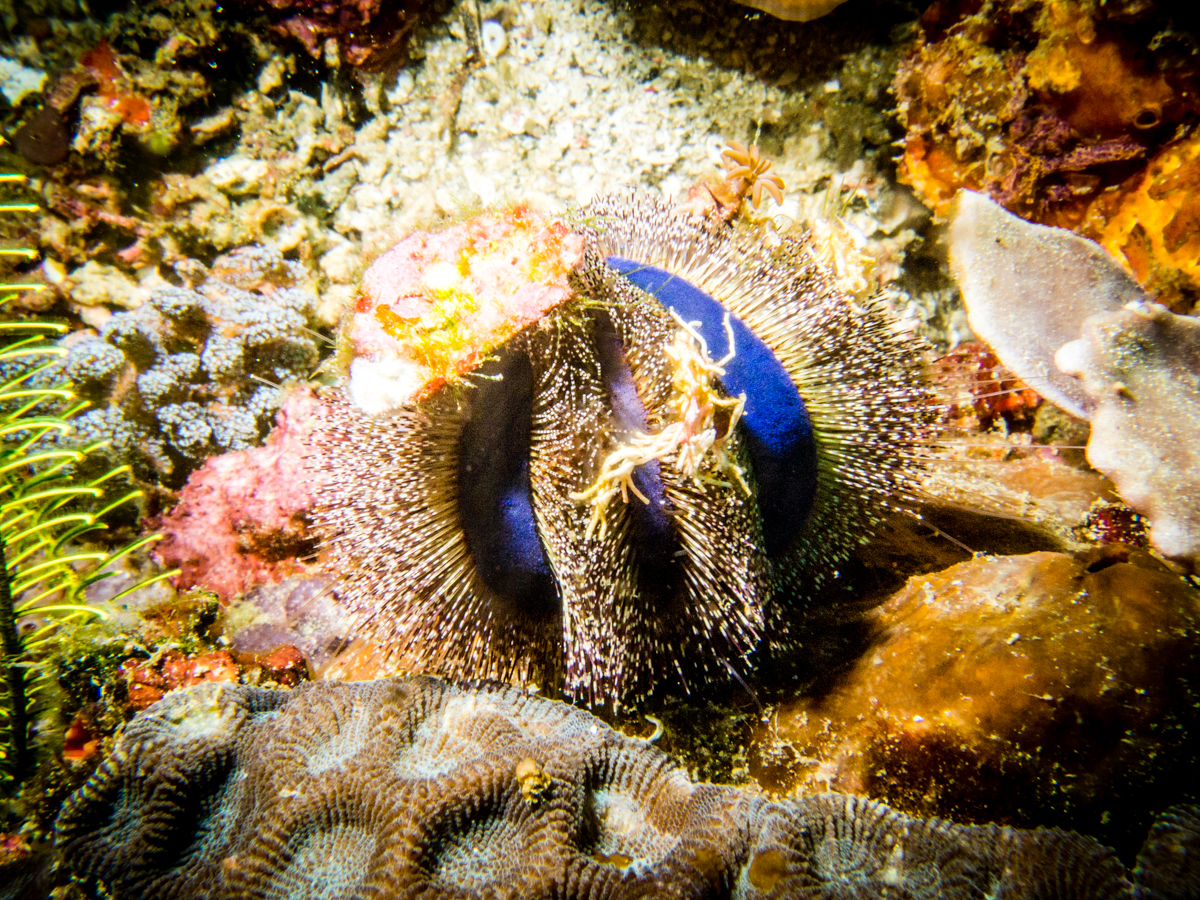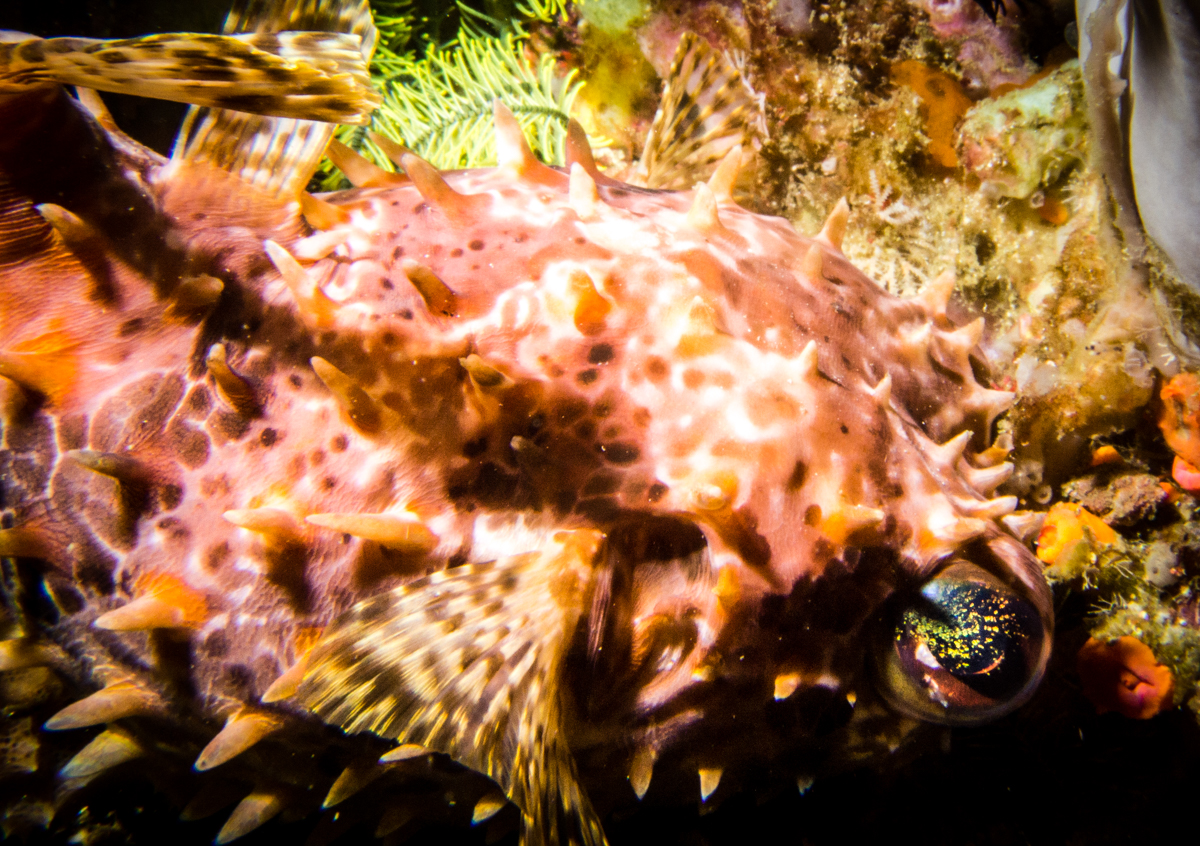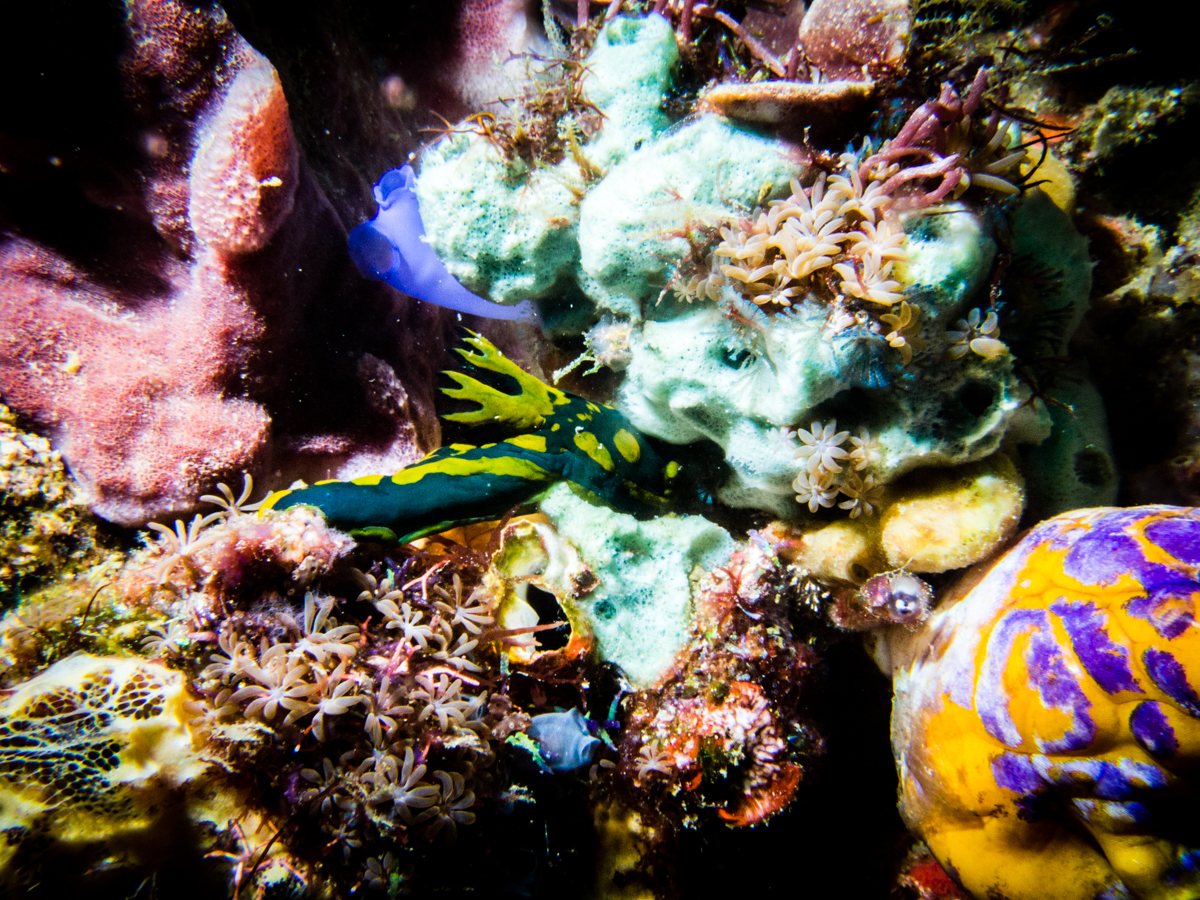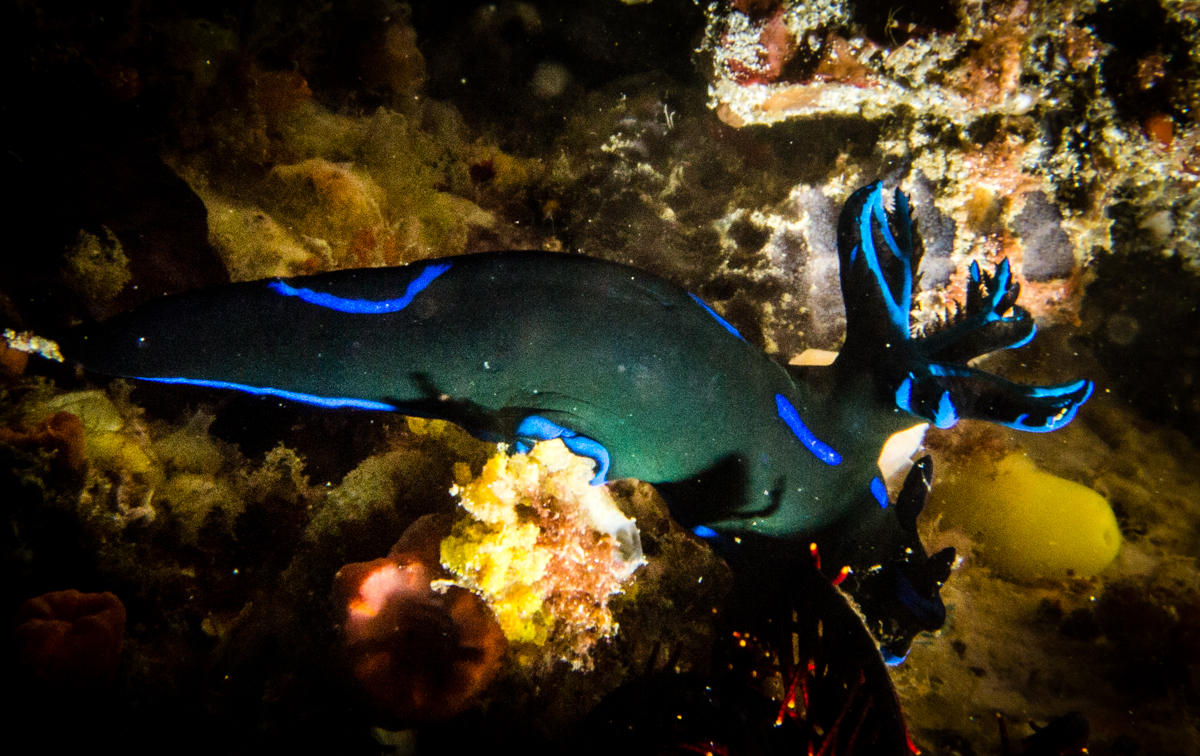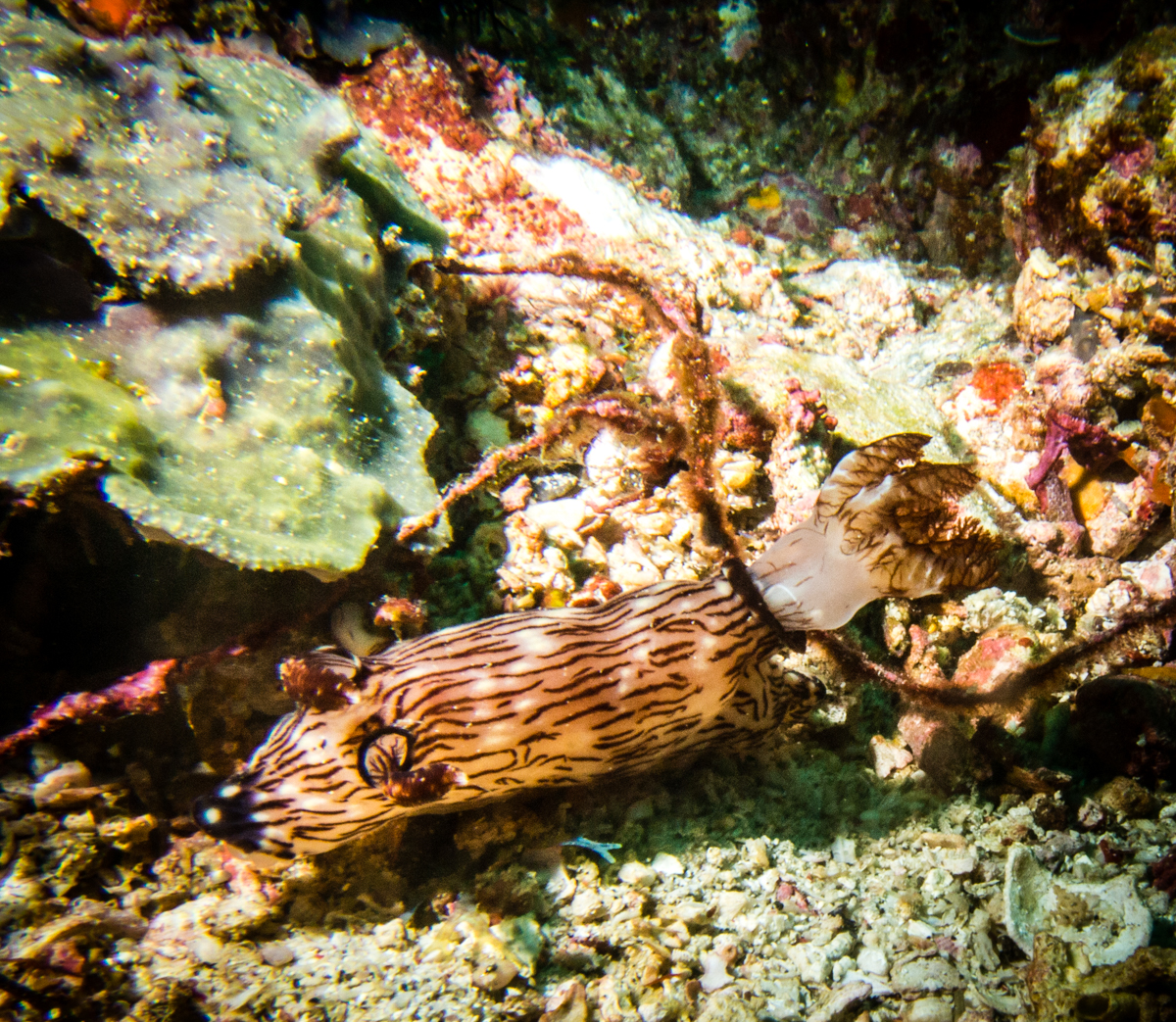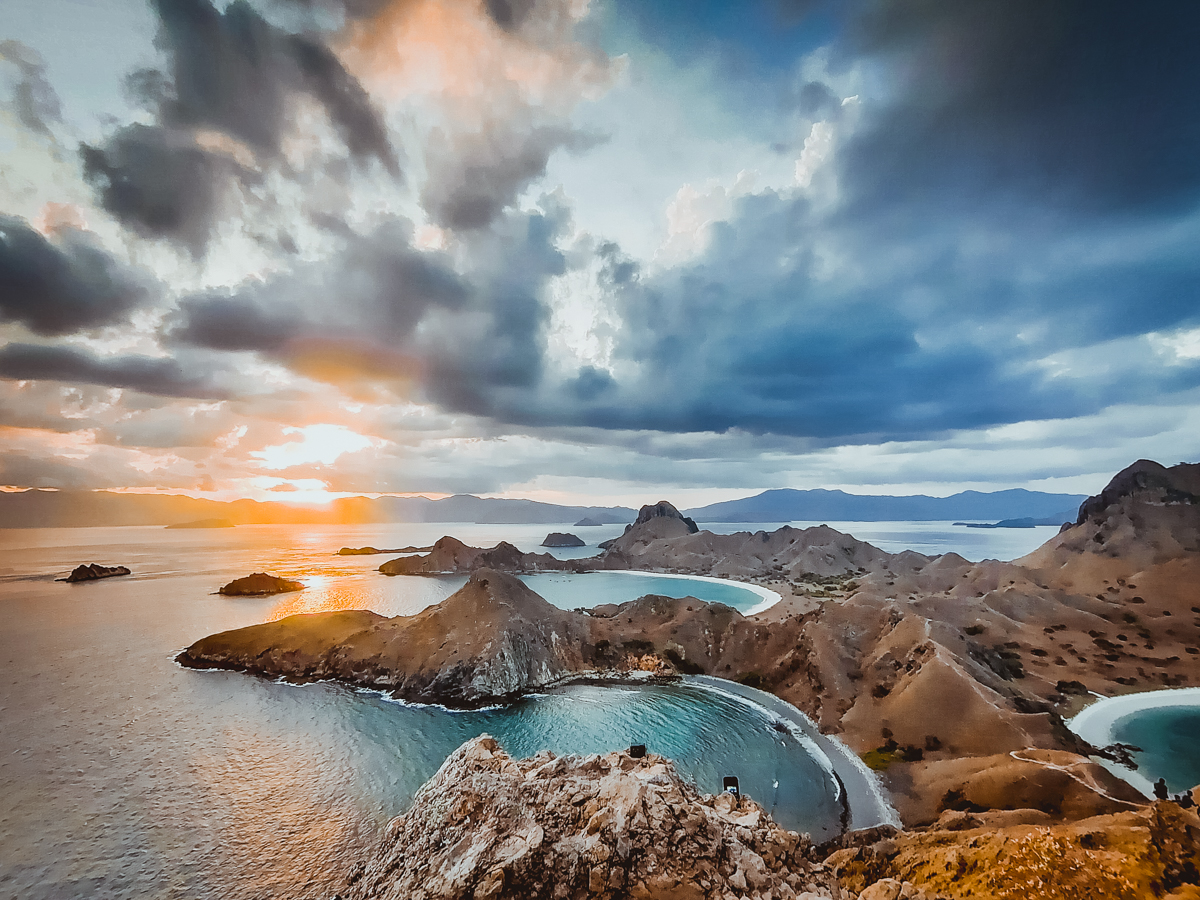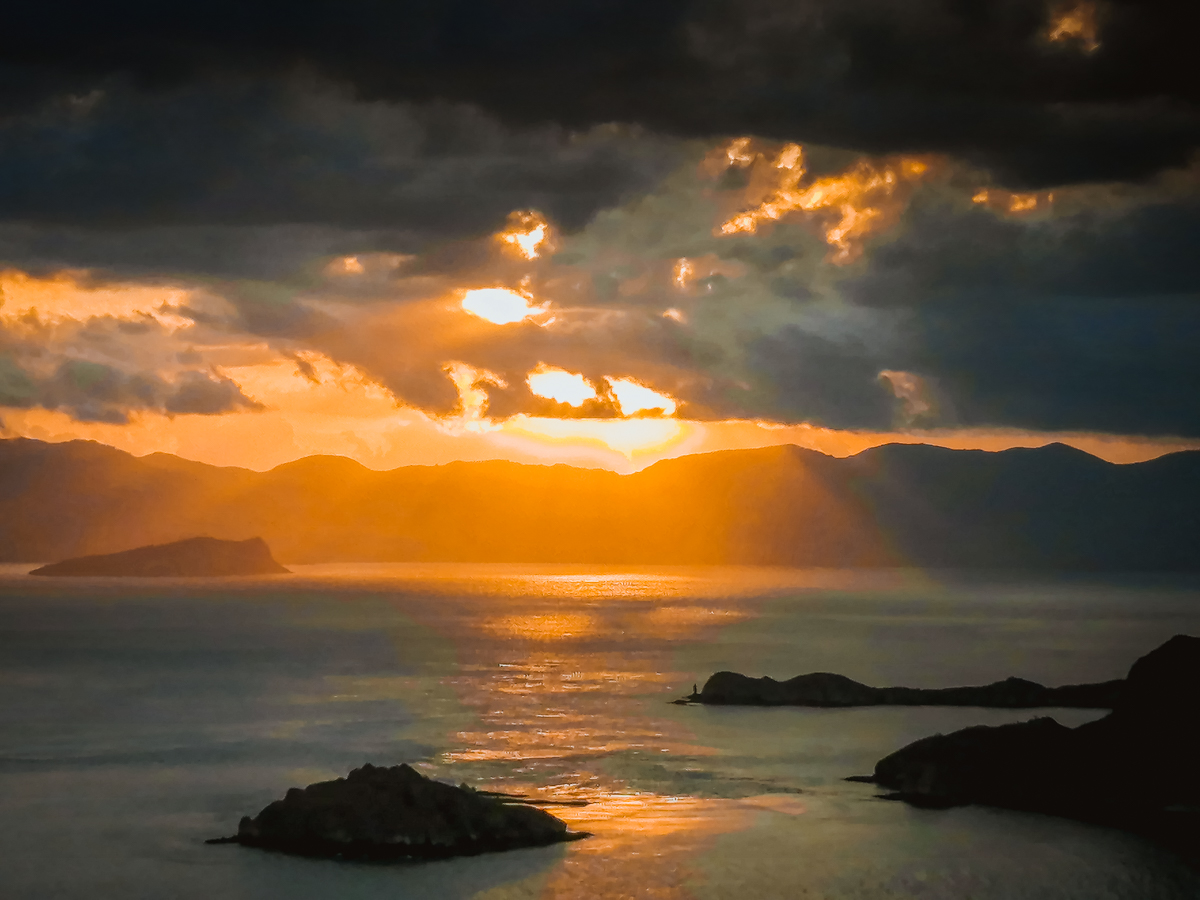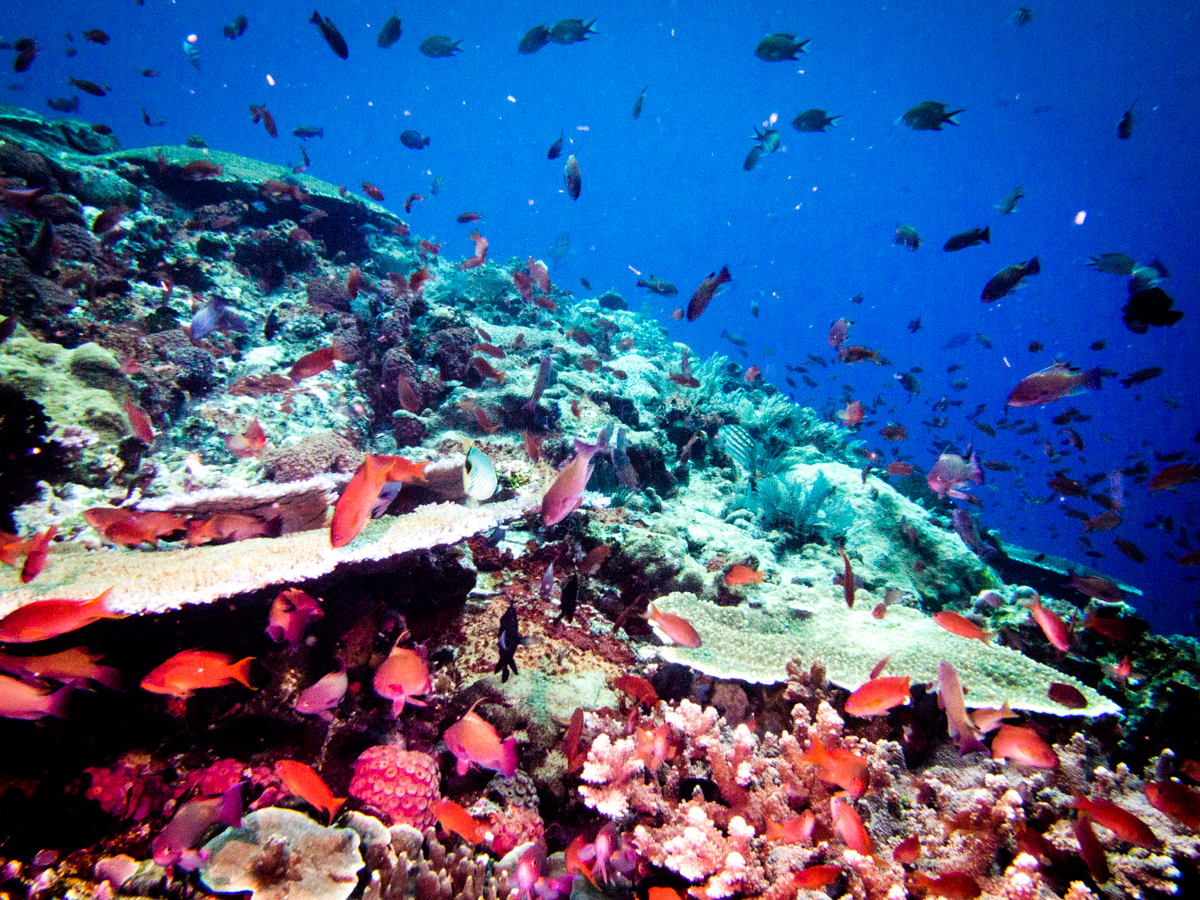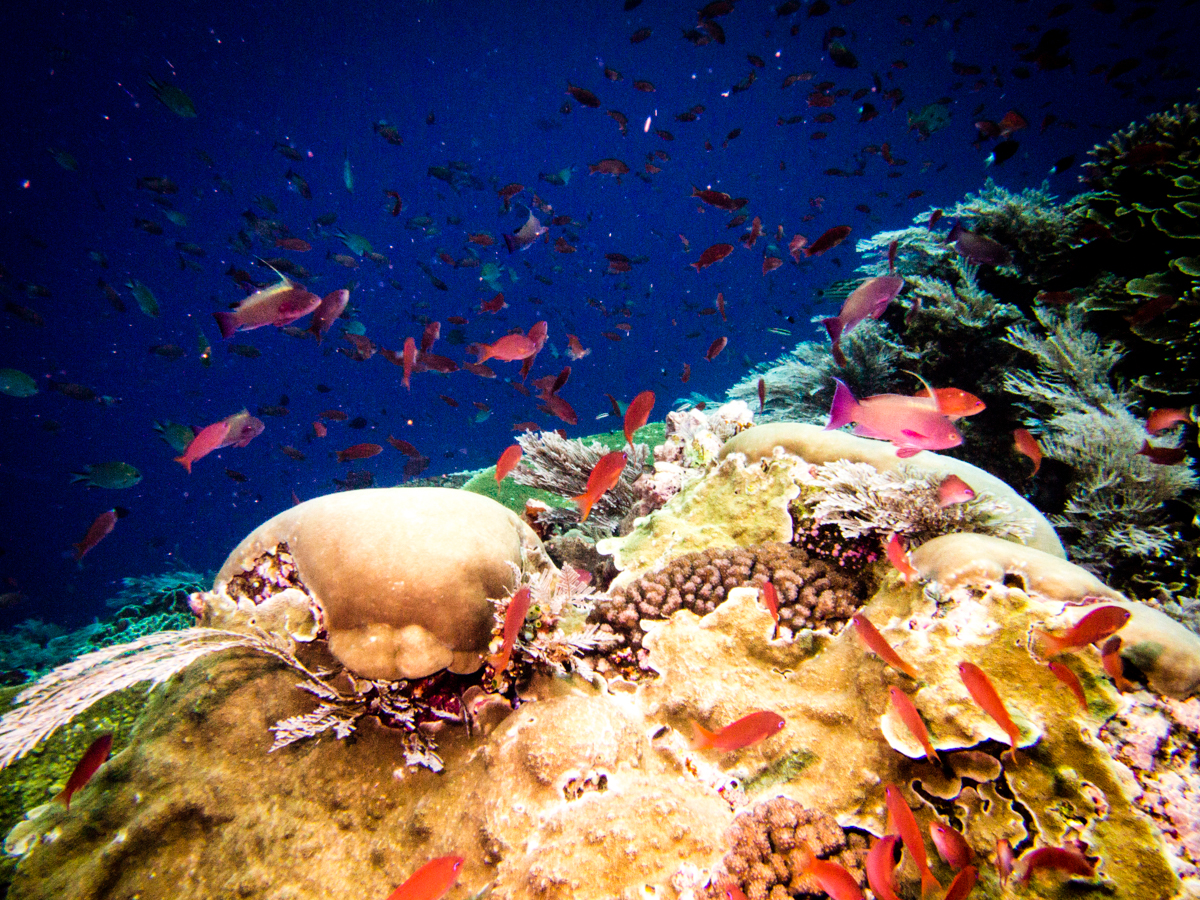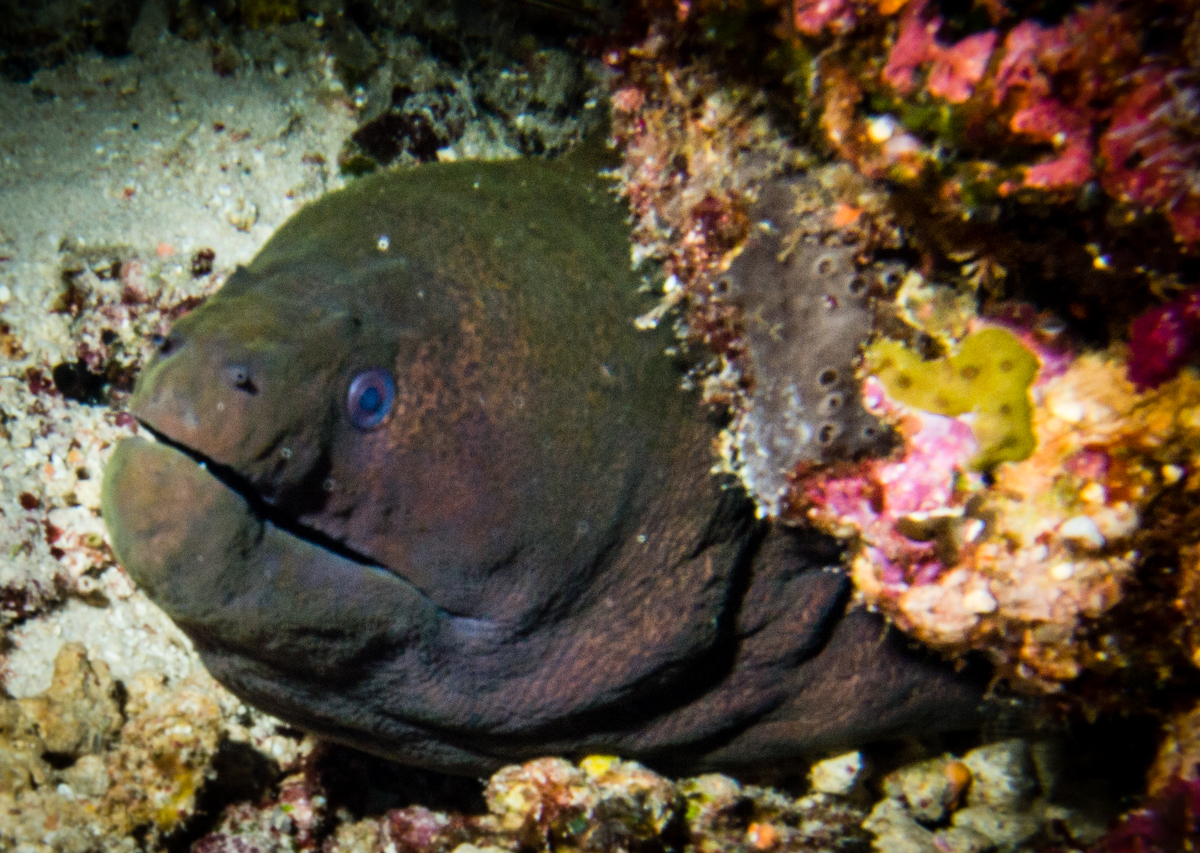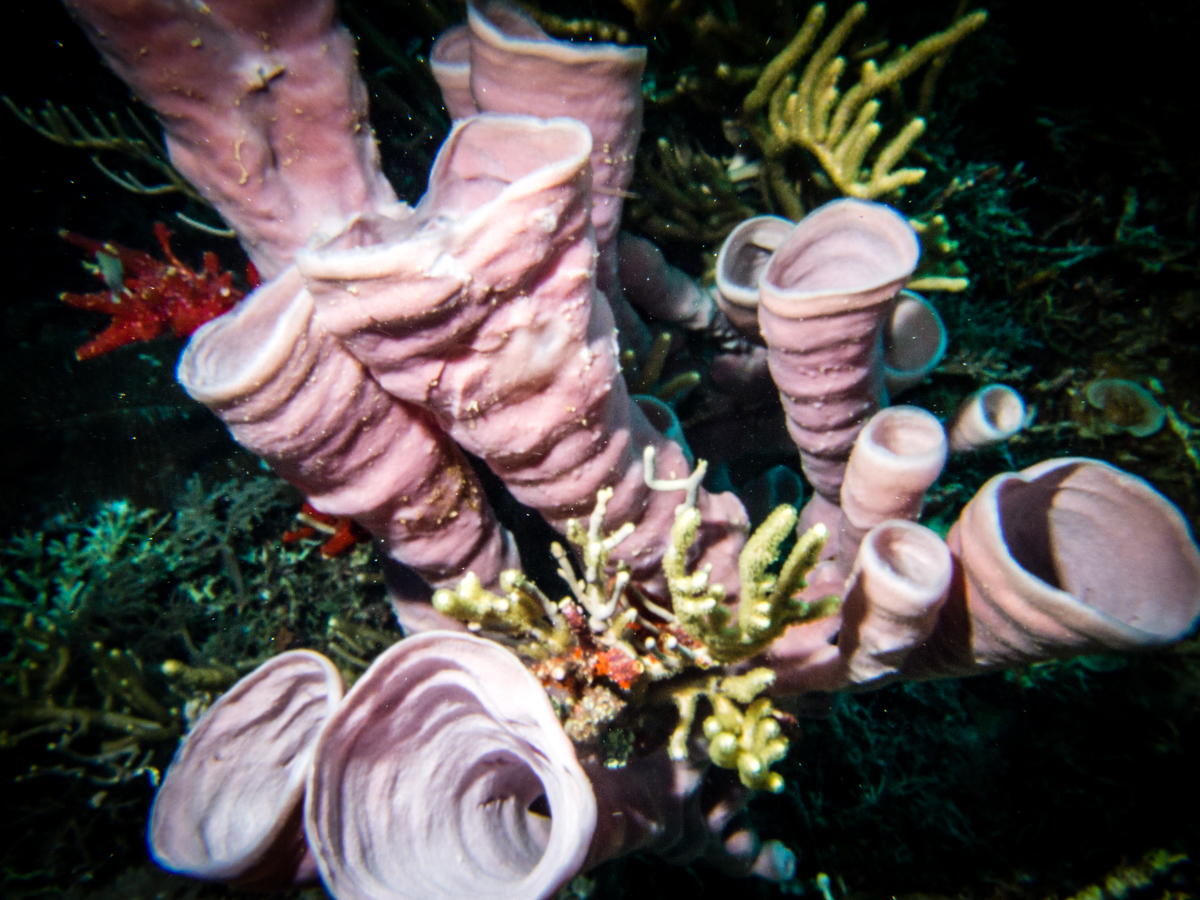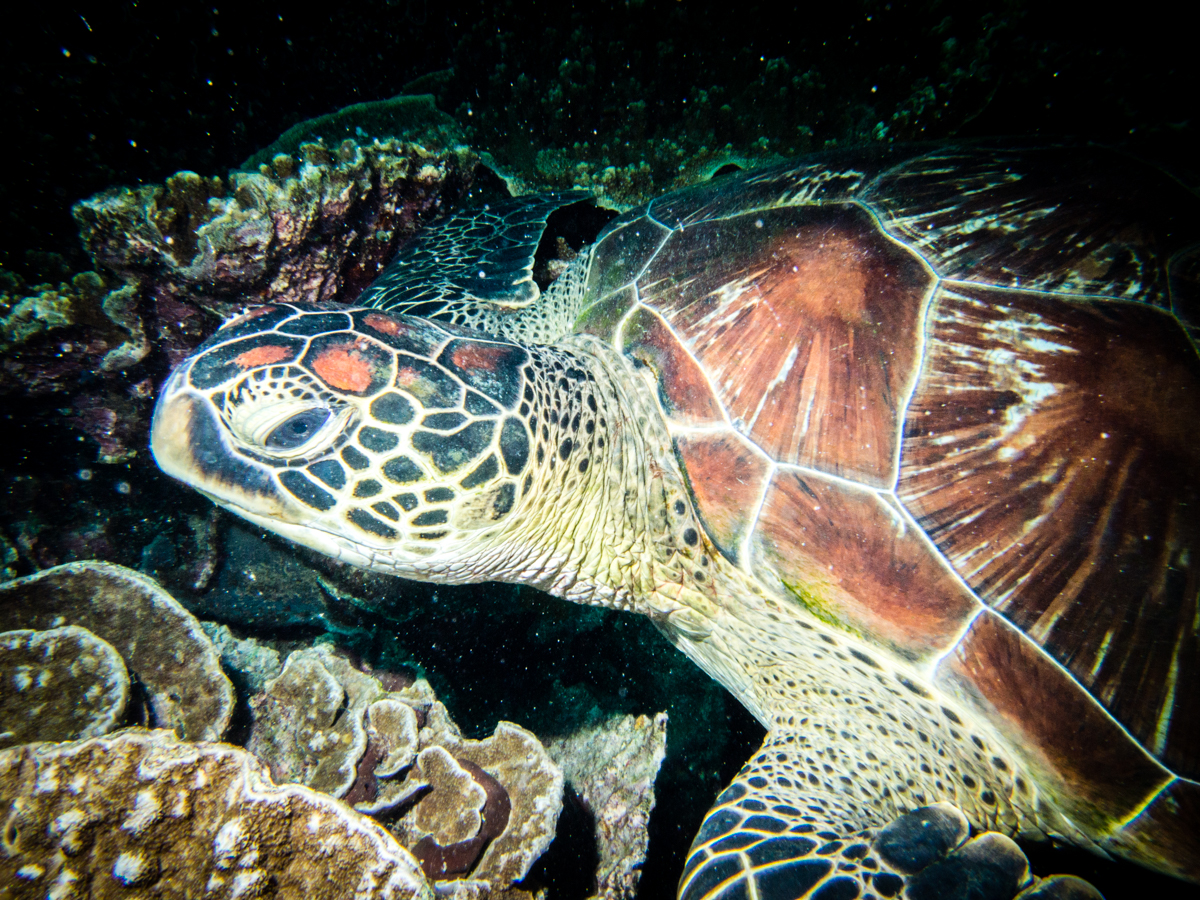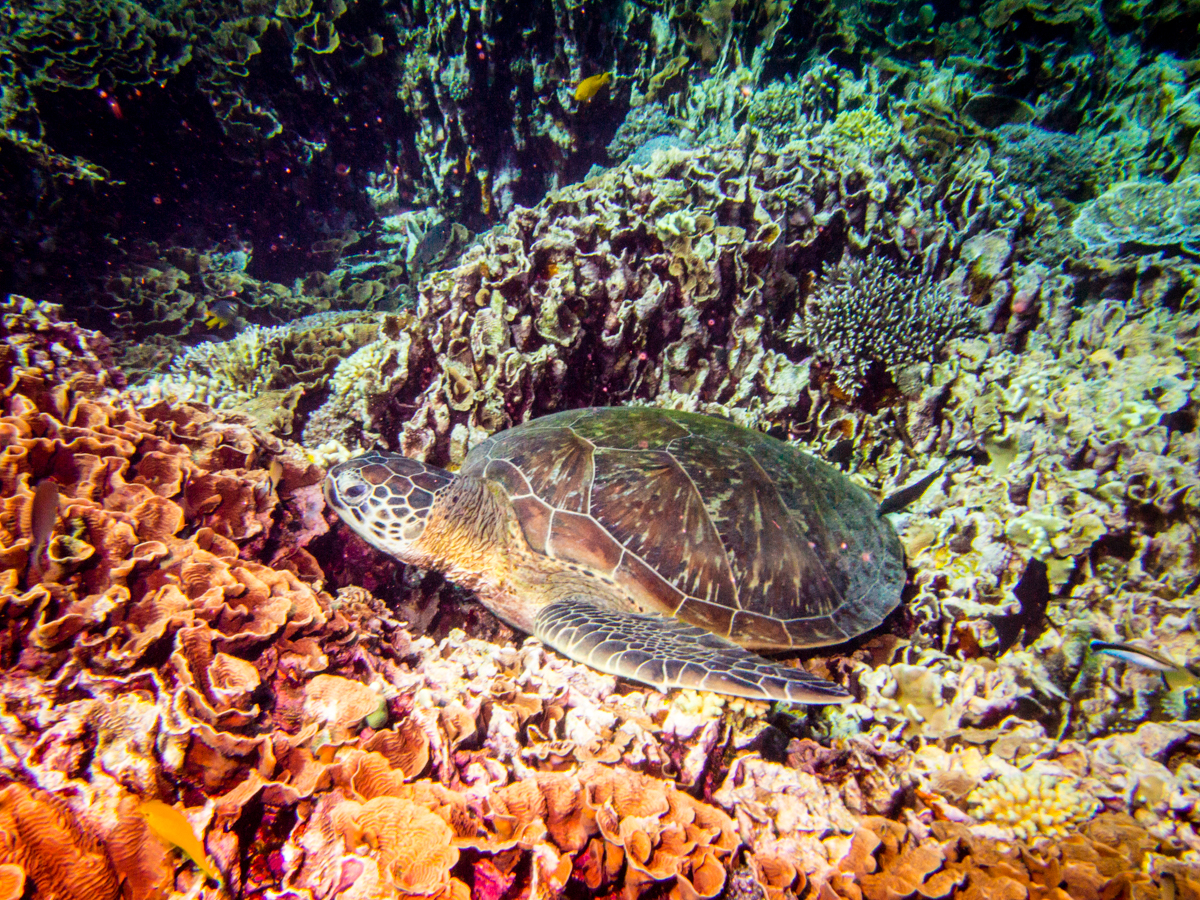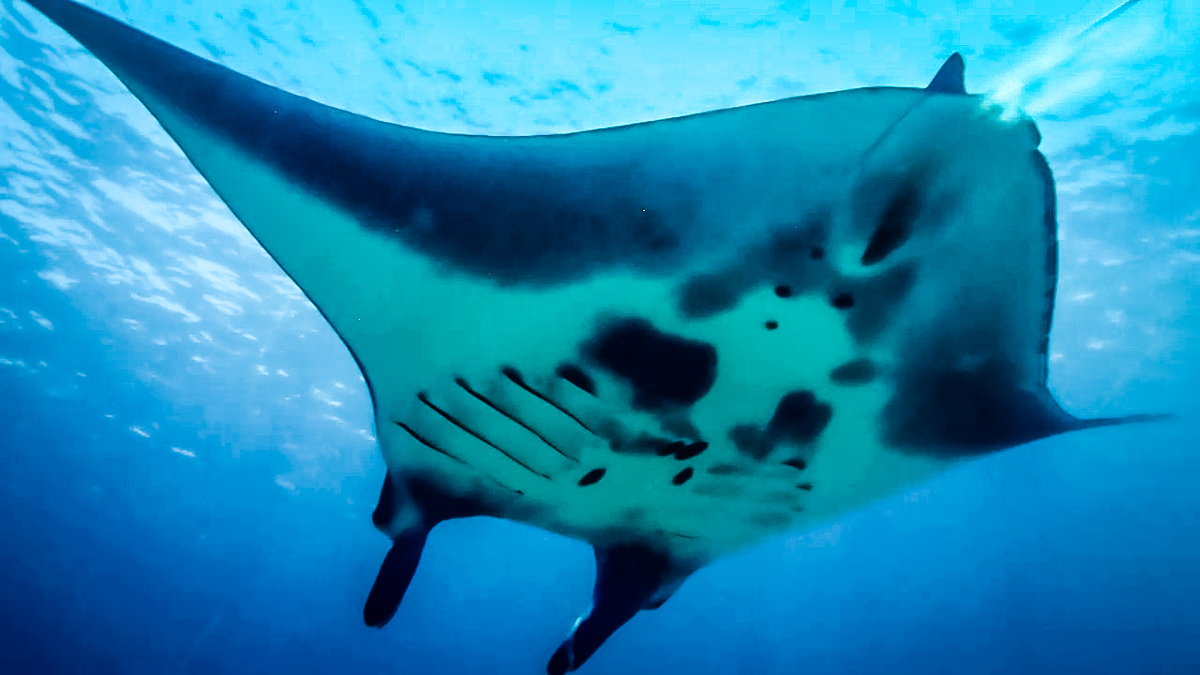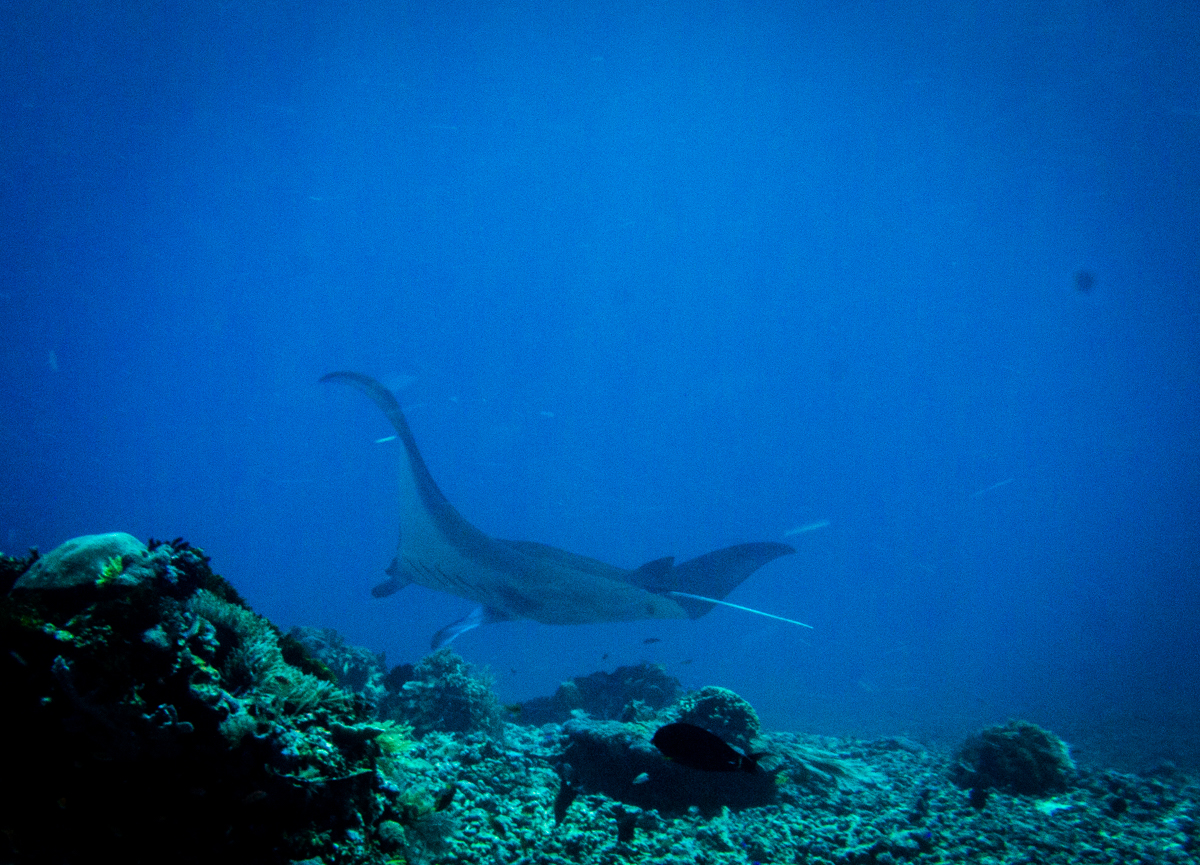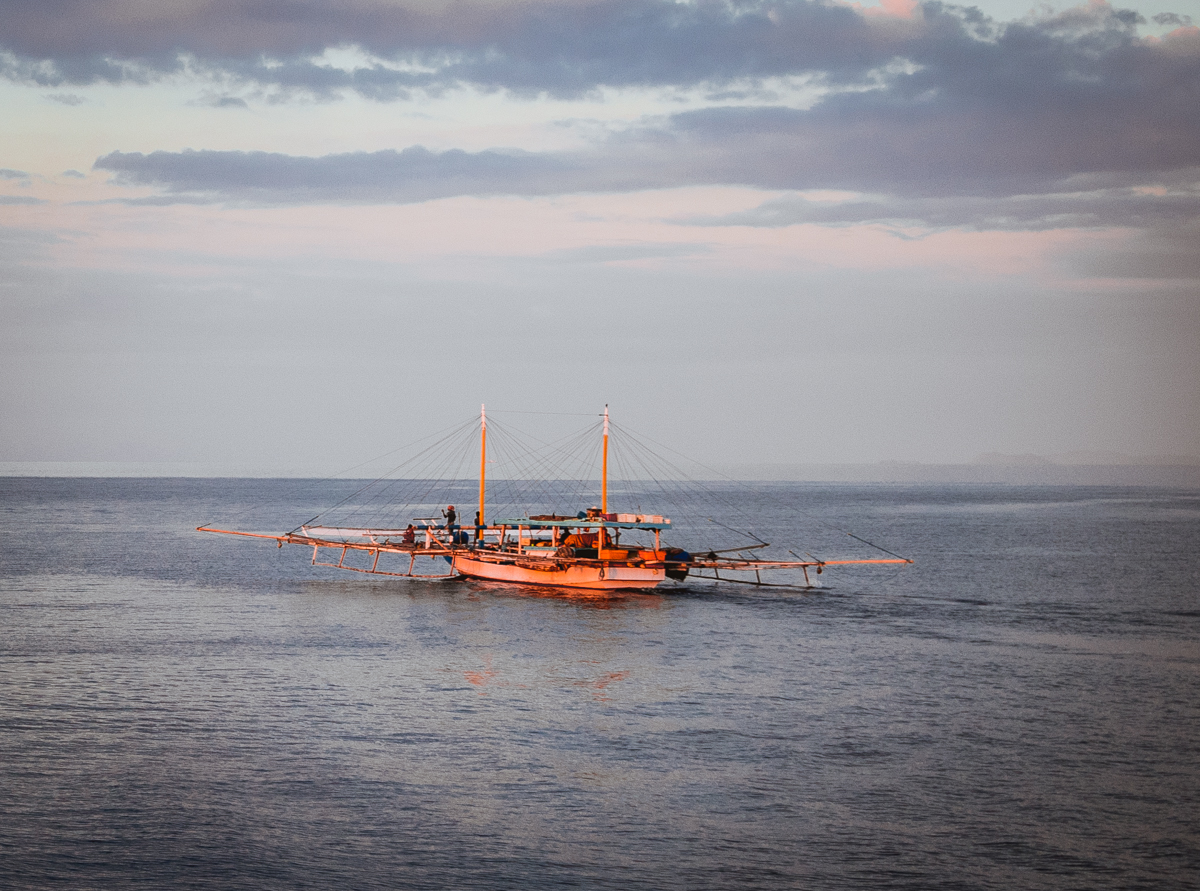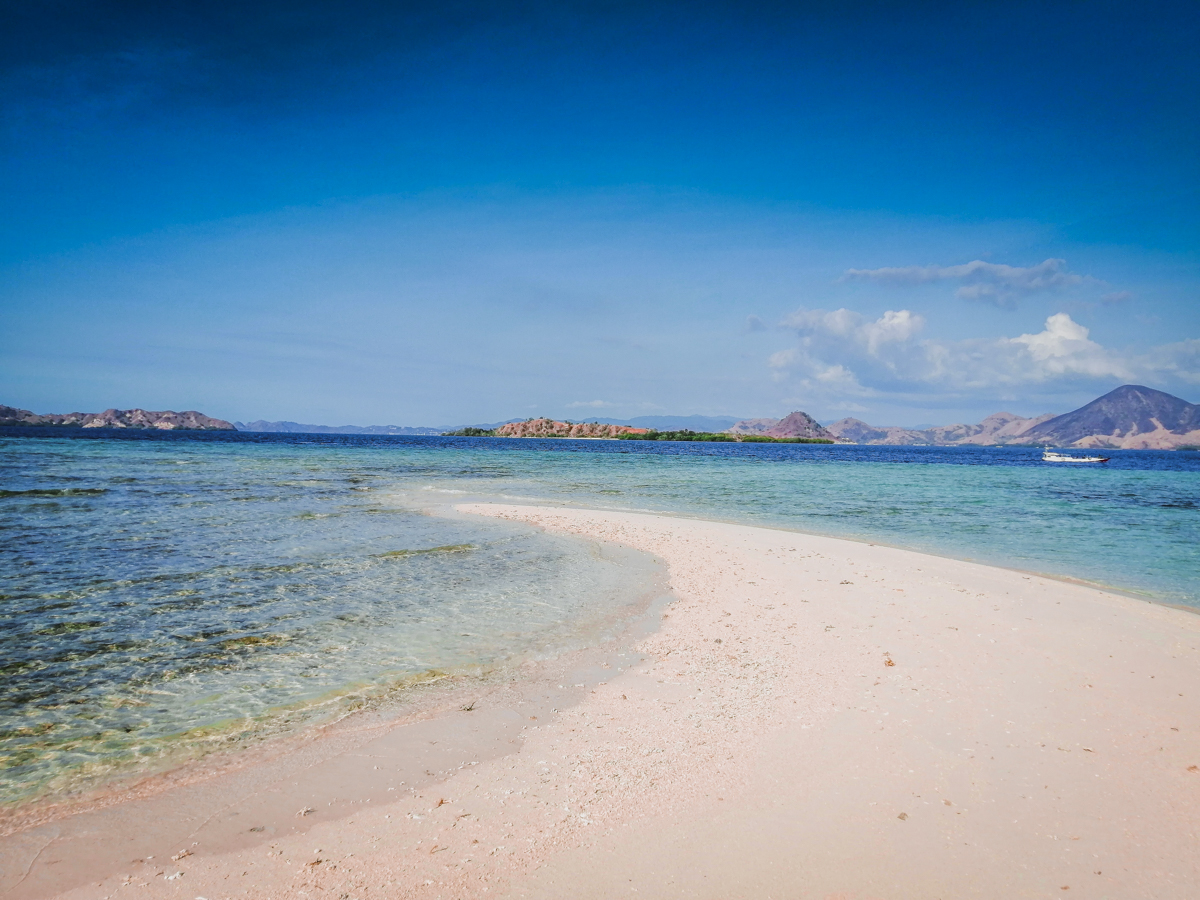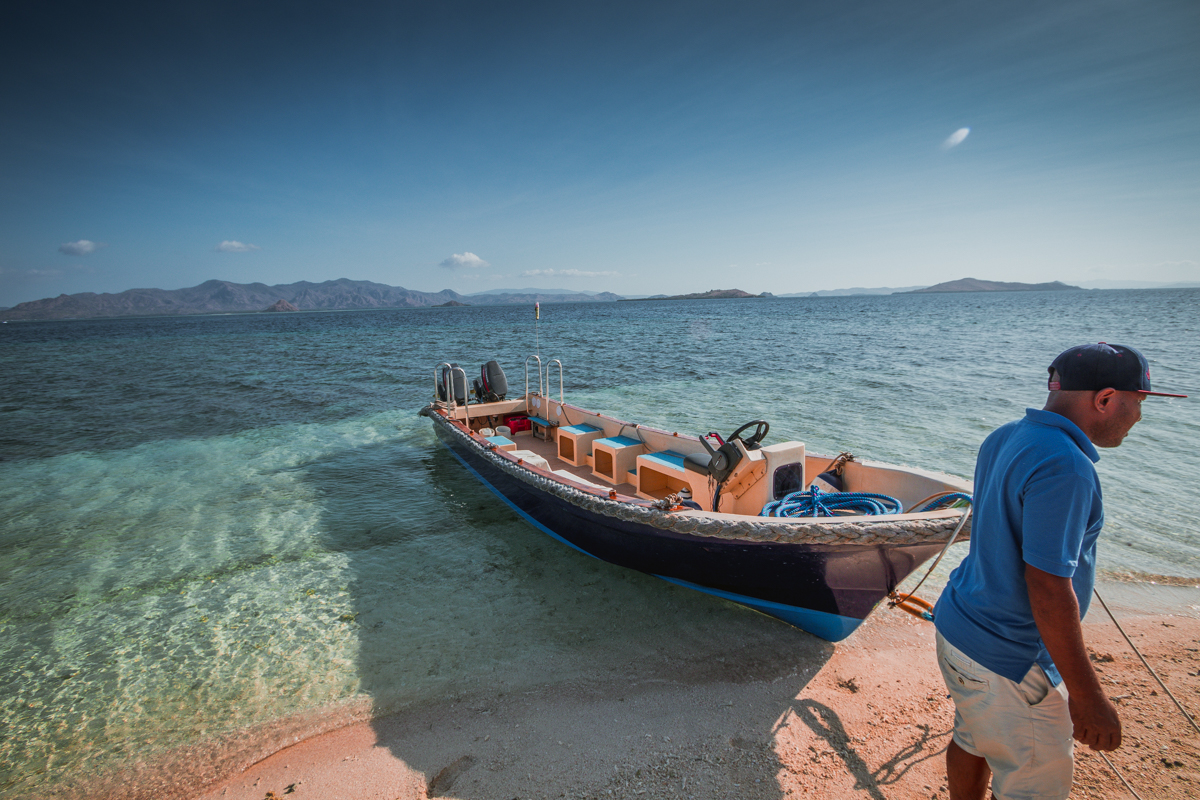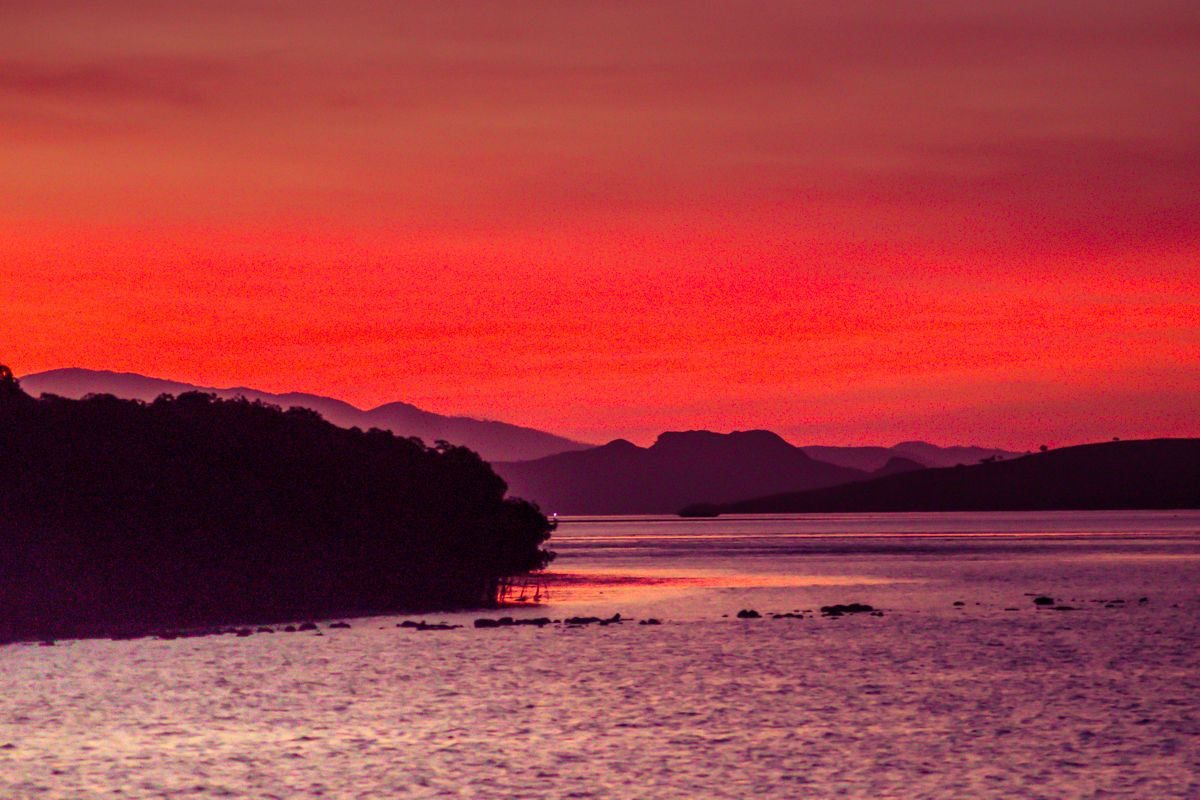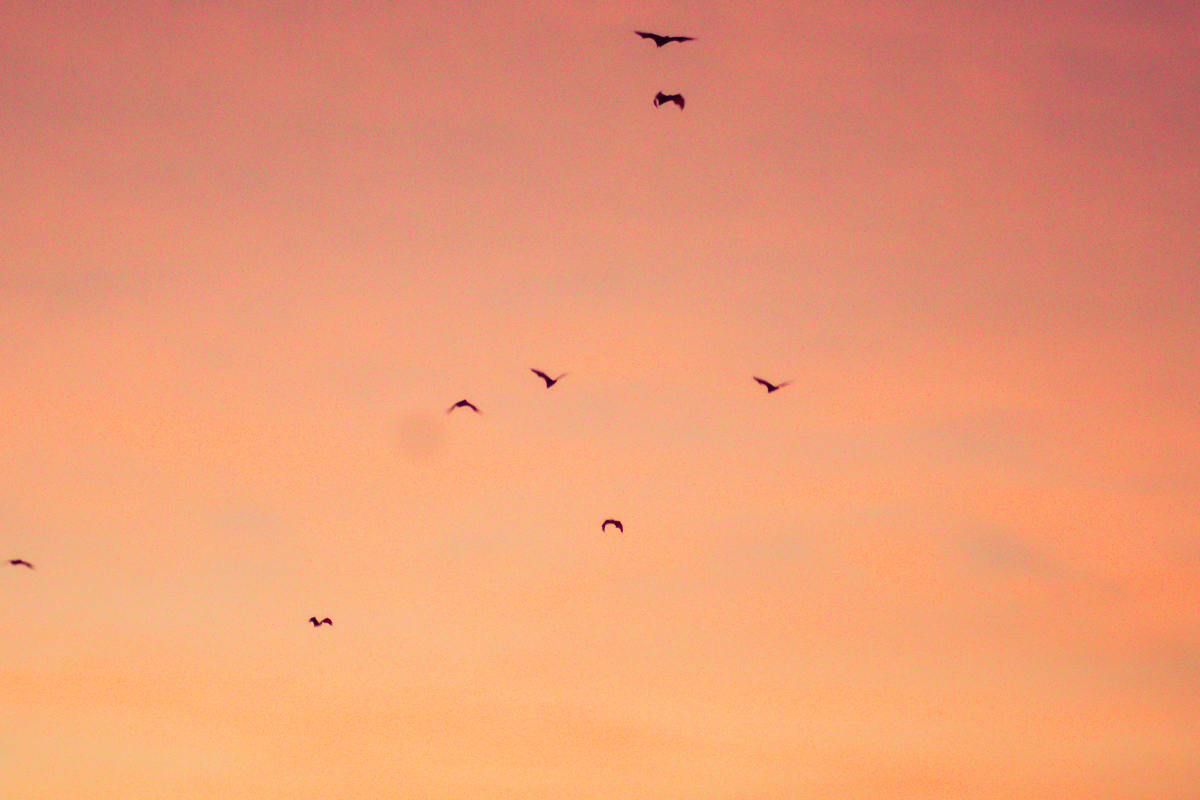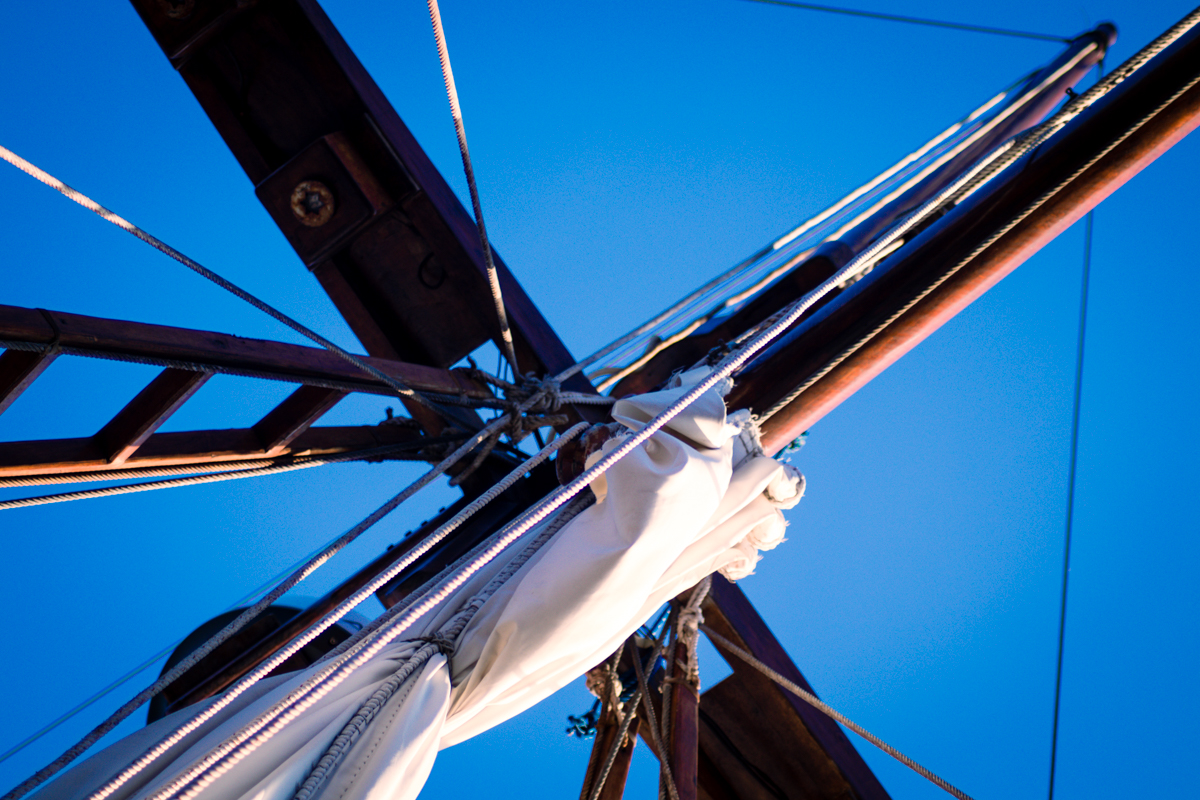I recently returned to Komodo for my 16th diving trip there. The Komodo national park has been totally closed off for the last 6 months due to Covid. I’m grateful that I had the opportunity to be one of the few people who got to dive this amazing ecosystem after such a long break. Would there be more fish? Fewer fishes? I was very excited to find out. I spent a week on the Carpe Diem, a small intimate diving liveaboard. Read on for my review of the Carpe Diem liveaboard and to find out what it’s like to dive Komodo when no one else is around.
Content of this article:
Getting to Labuan Bajo Indonesia
The Komodo national park is reached via the Labuan Bajo airport. Due to the coronavirus pandemic, foreigners are not allowed to fly into Indonesia. I was lucky since I was already in Bali and so I was able to do this trip at a very special time.
Tip: if you are desperate to get into Indonesia now, I have heard that it might be possible to enter with a business visa or Kitas. It’s worth checking with an Indonesian visa agent.
From Bali, I usually fly to Labuan Bajo with Garuda, as they have a great luggage policy for diving equipment. The only airline currently flying to Labuan Bajo was Batik air, and I’m happy to recommend them. They offer 20kg of free luggage, the plane is clean and comfortable and the staff friendly. I took this flight 4 times in the last month, and it was always on time. They also never checked the weight of my carry-on bag.
TIP: At the time of writing, Garuda allows 30 kg of diving equipment as free extra baggage, making it the best choice of airline for divers in Indonesia. If you are thinking of booking Lionair because it looks cheaper, do read my review on why I will not fly Lion air here.
I took one of my flights in business class, and it is not worth it. You get an extra 10 kg of baggage allowance and a bigger seat, but that’s it. No lounge access, and no extra food and drink in the plane. Not even a coffee or a soft drink. Just the same small plastic water bottle you get in economy.
There are some additional requirements to fly due to the coronavirus. I had to take a rapid test a few days before and show it on arrival and departure. I also had to download the Indonesian EHAC application on my phone and complete the form for each flight, which was checked on arrival. All the extra COVID controls were fast, friendly, and well-organized.
If you want to spend a few more days in Komodo before or after your trip, check my reviews of the Seraya Resort and the Ayana Komodo.
Arriving at the Carpe Diem liveaboard
Cecile, the co-owner of the boat, came to greet us at the airport. A car was waiting for us, and within 10 minutes, we were whisked away to the tender boat and onto the Carpe Diem liveaboard. The crew was waiting for us with cold drinks and cold towels, and lunch was promptly served on the outside deck.
I was surprised to see that this trip would just be me and one other passenger. Most other business-oriented companies would have canceled the trip due to the low number of participants. Carpe Diem has a policy of not canceling trips, which shows how much they care about their customers. So it was just two of us, with eight staff to pamper us.
Our luggage was transported to our cabins during lunch and the vacation could truly start. What a feeling to be on an authentic boat after 6 months of COVID lockdown! We left the port during lunch sailing to gentle waves as we started to explore the Komodo national park.
Review of the Covid protection measures onboard The Carpe Diem liveaboard
Carpe Diem takes the threat from Coronavirus very seriously and had a few measures in place to protect guests.
All guests require a COVID rapid test in order to enter the Komodo National park.
The Carpe Diem liveaboard had installed a sink at the entrance of the boat and near the dining area, making it easy for everyone to wash their hands a few times a day. Our temperature was taken upon boarding the boat and all the staff would be wearing face masks at all times.
We were asked to wear a mask only when going ashore to visit some islands where other people were present. The rest of the time was mask-free.
They also had prepared individual water tanks to rinse our snorkeling masks after each dive.
All those measures made me feel safe while on the boat.
Review of The Carpe Diem liveaboard boat
The Carpe Diem Liveaboard is smaller than most boats cruising Indonesia. However, since it takes only 8 guests, it always feels both spacious and intimate. It is a peaceful and serene boat. There are two dining rooms, one inside, and one outside.
We enjoyed plenty of deck areas with lounge chairs and shade. They have eight lounge chairs so even a full roster of passengers can all relax on deck at the same time.
I truly enjoyed the top deck, and we got to witness some amazing Komodo sunsets from up there.
The lounge area at the stern of the boat was also a phenomenal place to relax, but don’t use it while the boat navigates, as it can be dangerous.
Review of The Carpe Diem Liveaboard bedrooms
With only four guest cabins, it creates an intimate atmosphere. Though it’s a small boat, the cabins are spacious, comfortable, and tastefully decorated. My cabin had a queen bed with a bunk bed on top. It could fit three people, but is more comfortable for two. It had two sitting desks and plenty of storage space.
The bathroom was more comfortable and spacious than most liveaboards. The shower is separated from the rest of the bathroom so you don’t get everything wet after a shower, as is often the case on liveaboards. Shampoo and soaps are provided.
The cabins on the Carpe Diem liveaboard looked like they had been recently refurbished. Everything was new and in good condition. The roof window provided lovely natural light and ventilation in the cabin.
I had a look at the other cabins, and they also looked spacious. The biggest one, with the best view, is the one on the top deck. The twin cabin downstairs is also a great option if you don’t like bunk beds. There are really no bad cabins on the Carpe Diem.
Review of the service on the Carpe Diem liveaboard
The Carpe Diem liveaboard is very comfortable, but what makes it truly special is the attention to detail. Plenty of small gestures from the staff made our trip easier and more comfortable.
At any time of the day, Ice, the waiter, would pop up and ask if we needed a drink or anything else. He would also always have our favorite drinks ready as soon as we came up from diving. The chef was very intuitive and flexible. He noticed our favorite dishes and would do them again during the cruise.
Everyone on board was very welcoming, but what really made this boat stand out was the presence of Cecile, the boat owner, manager, and divemaster. She left the corporate world along with one of her colleagues and bought the Carpe Diem liveaboard. Cecile is very clear that these tours aren’t simply a commercial endeavor, and it shows with many small gestures. She is ever-attentive to the comfort of the guests and shares numerous stories during group meals. The cruise had a definite feminine vibe since along with Cecile as the owner, the boat captain is also a woman. She did a great job steering the boat. This makes the Carpe Diem a great choice for solo woman travelers.
Review of the food on the Carpe Diem Liveaboard
The owners are French, with the characteristic love of food, and it shows in the meals onboard. We enjoyed a mix of Indonesian and French food. From gratin Daufinois to ratatouille or Boulet with Tomato sauce, we explored a lot of famous French dishes and it was delectable. Every lunch and dinner, 4-6 dishes would be on offer, with meat, fresh fish, and seafood, along with vegetarian options. They were wonderful in adapting the dishes to guests’ preferences. Fruits are served after lunch and a dessert after dinner.
There was also plenty of food during the day. You will definitely never go hungry on the Carpe Diem liveaboard. It starts with an early 7 am light breakfast before the first dive. Then around 9:30, we got a cooked breakfast including eggs, bacon, pancakes, and more. Lunch was around noon. After the third dive, they would prepare an afternoon tea, with cakes, fried banana, chocolate donuts, and more.
All the meals were served at the large table on the front deck. The table is shaded and is a great location to enjoy the surrounding views, especially when we were navigating. Service was impeccable.
It’s worth noting that unlike many other liveaboards, soft drinks are included in the price. Beers are affordable, at 35000 Rp per beer (about 2 euros). Wine and other alcohol options are also available for purchase.
Review of the dive organization on the Carpe Diem liveaboard
The small size of the boat, catering to only eight divers, makes the Carpe Diem a lovely option for people who like to dive in small groups. Divers are generally split into two groups of four. The dive briefing was held at the dining table and started 30 minutes before the dive time. Cecile would show us a drawing of the dive site, talk about technical aspects, and describe the fishes and creatures we are likely to find. We would then put our wetsuits on. All the diving equipment would already be waiting for us on the speedboat we and just needed to walk down to it. Their speedboat is one of the best I have seen. Large, fast and comfortable. It can fit all the guests so there is no need to organize multiple trips to the dive sites
Once on the speedboat, Agus, who drove the tender boat this week, would help us put our tanks on. Everything was made very easy and the organization was flawless.
Cecile is a very caring and conscientious diver. She manages to figure out the best way to dive “difficult” sites to avoid strong currents, helping make divers with little experience feel comfortable with these trickier dives.
There is no nitrox onboard, but large tanks are available without an extra charge. Diving equipment is also provided free of charge (other boats often charge 100 to 200 dollars for a week of equipment rental).
On our trip, the Carpe Diem liveaboard offered 3-day dives each day. The maximum dive time was 60 minutes per dive. Night dives were also on offer, but none of us liked night diving so we skipped those and enjoyed the sunset in various gorgeous locations instead.
If you want to do more than diving, there are also kayaks and paddleboards available.
Our itinerary on the 7-night Carpe Diem liveaboard Komodo cruise
Day 1: Getting onboard and first dive in Komodo at Sebayur Kecil
Unlike most liveaboards, the Carpe Diem offered a dive on the first day of the cruise. We went to Sebayur Kecil, a sloping reef with nice corals and many fishes. Sebayur is excellent for check diving, as it is very protected and often has very low current. It has a sandy bottom with a maximum depth of 25 meters. The coral garden at 5 to 8 meters was so beautiful.
After the first dive, we enjoyed a beautiful sunset on board.
Day 2: Getting into the action in North Komodo
The Crystal Rock dive site in Komodo is composed of the two submerged pinnacles of Gili Lawalaut. The biggest rock goes up to the surface, and the smallest one is 12 meters down.
There were a lot of sharks and giant trevallies patrolling the area on our dive, including a grey reef shark. The channel between the two pinnacles had many schools of fishes including sweetlips and big napoleon wrasses.
Castle Rock is probably my favorite dive site in Komodo. It is an underwater pinnacle that starts at 5 meters and goes down to 30 meters. This dive site can have a ferocious current, making it often one of the most exciting dives in the entire park, but there was almost no current when we dove it. There are a lot of big pelagic fishes hanging out in the area.
The Golden Passage dive site in Komodo is exhilarating, as the drift can be quite fast through the channel between Komodo Island and Gili Lawa Darat. But again, there was little current when we dove it. This is a shallow dive site, with a maximum depth of around 20 meters. Here you can find the healthiest hard corals in Komodo. It is an excellent place to spot sharks at 20 meters.
Day 3: Looking for mantas at the core of Komodo
Batu Bolong is Komodo’s most famous dive site, and it’s an example of diving at its best. there is always a full-on festival for fish life at the “Hollow Rock.” The reef is in wonderful condition because of the rock’s topography and exposure to strong currents. Batu Bolong has everything you could wish for in a dive. Amazing hard and soft corals, dramatic topography, millions of small colorful fishes, and a lot of big predator fishes hunting in the blue. Napoleon wrasse and Whitetip reef sharks reside in deepwater areas, cruising to the shallow areas for hunting. Hawksbill turtles feed on the sponges and tunicates, giant sweetlips lurk in the gullies and overhangs, and surgeonfish danced around the pinnacle.
Our next dive was Manta Point at Makassar Reef. This is the largest dive site in Komodo, spanning over 2 kilometers. It is a sandbank with a sloping reef that is mainly sand and rubber.
The highlight of this site is that there are a few cleaning stations that attract mantas, mobula, and eagle rays. We were lucky to find a manta there since September is not typically manta season in Komodo.
The pink beach dive site near Komodo island is a gentle beach slope going down to 25 meters. A small wall starts at 15 meters with many crinoids. Unfortunately, I had to skip this dive because of ear problems.
A cruise in Komodo is not only about diving. There are many gorgeous beaches and viewpoints to explore. On day 3 we had drinks at Pink Beach and enjoyed a beautiful sunset.
Day 4: Exploring South Komodo and getting intense manta action
We headed toward South Komodo overnight after our evening at Pink Beach.
The sea was rough, the boat was moving a lot, and the captain decided to turn back and go to Padar island instead.
Once in Padar, the sea calmed down and they gave it another try. I have been to Komodo 15 times before, many times on liveaboards, and had never made it to the South due to bad weather, so I was excited to finally make it to the area.
TIP: Bring a 5mm wetsuit, as the water is South Komodo is usually much cooler than central and North Komodo. For Central and North Komodo, a 3mm wetsuit will be enough for most people. During our trip, the water temperature was around 27 degrees.
We did our first two dives at the Manta Alley dive sites in South Komodo. Manta alley is composed of arid rock formations at the bottom of Komodo island. We saw some dolphins from the boat but unfortunately didn’t see them underwater. But we did see mantas—so many that it was hard knowing where to look. I stopped counting them after the first five, but there must have been over 30. They were coming from everywhere. Feeding, doing the mating dance, getting cleaned… what a party!
Also, I have never seen so many krill in my life. The water was so thick with them that they were ruining our visibility. I was half expecting whales to come by and feed on this feast. Mantas came and went in their graceful ballet. Some were more curious than others and came to have a good look at us. What an amazing dive!
After lunch, we cruised towards the south of Rinca island. Cannibal rock dive site is an underwater peninsula in the middle of a bay. The sea is surrounded by hills, making the area protected.
The underwater peninsula starts at 5 meters. It is formed by black rocks and the most incredible, colorful soft corals. We saw two turtles and an absurd number of fishes. Visibility was much lower than in central Komodo, which I am told is normal for South Komodo because the water is nutrient-rich.
In the evening, we took the small boat to go and look for Komodo dragons on the beach, but they weren’t in this area of the park tonight, so we enjoyed the sunset from the boat.
Day 5: Finding nudibranchs and shrimps in South Komodo
We were still in the south of Rinca at the start of day 5, and we did the Tunjung dive site. This dive site is near the exit of the bay along a cliff. It is a wall dive that finishes in a plateau of rocks, sandy bottom, and coral bommies. Again, the colors of the soft corals were amazing. This is an extraordinary place for macro photography lovers, as there are plenty of nudis and shrimps to be found everywhere. Keep an eye on the blue, too: despite the poor visibility, we saw a huge eagle ray swim by.
Our next dive site was Pulau Banana. Still in the south of Rinca, Banana Island is a dive site around an island with a mix of walls and a sloppy reef. Visibility isn’t great, but it is an amazing site for macro photographers. We found so many shrimps, crabs, and all kinds of nudibranchs. The soft corals around 15 meters deep were really beautiful.
After our last dive, we navigated towards Padar and arrived in time to watch the sunset. The view from the summit is stunning, with the beaches of different colors. It is a steep walk, but it is not technically difficult, since they’ve built a path.
TIP: for Padar, No hiking gear is required: it can even be done in flip flops. I did a time-lapse of the sunset, which you can see below
Day 6. Returning to central Komodo and the amazing Batu Bolong
We dived Batu Bolong again. We felt so privileged to be able to dive this amazing site multiple times with no other divers around. We were there during the slack and were able to go around the whole pinnacle.2 eagles came to check us out. A huge barracuda was patrolling the area. Most of the big fishes (including sharks) were taking advantage of the low current and were sleeping on the reef. The small fishes were there en masse and the show was spectacular. To top it off, two majestic eagles were fishing right on top of us as we surfaced.
I could do this every day!
We moved on to Tatawa Kecil dive site. Tatawa Kecil means a small smile. It’s a small island surrounded by a sloping reef. There was very little current when we dove it, just like many of our dives this trip, but the colors of the corals were stunning. We saw a few nudibranchs and many sweetlips fishes.
Our next dive was at Shotgun dive site (also called the Cauldron) in the Noth of Komodo. The Shotgun is one of the most exhilarating dive sites in Komodo. It is the channel between two islands, and it often has strong currents. On this trip, we dove it differently: entering from the side and avoiding most of the current.
The corals, both hard and soft, were beautiful. We saw a manta flying by and trying to feed into the current. Unfortunately, it didn’t hang around for long. We also saw a cow tail ray in the sandy bottom, the usual jacks, and many other schools of fish.
Day 7: Experiencing a close encounter with turtles and mantas
Already the last day of the trip—it all went by far too quickly. The plan for day 7 was to do two dives in the morning and then some activities in the afternoon.
Siaba Besar dive site starts with a sandy bottom that progressively becomes a huge coral garden. This dive site is sometimes also called turtle city—I’ll let you guess why! The hard corals are massive, with lots of cabbage and staghorn corals. This dive site is usually quiet, as it is in a small bay, which also makes for a gentle and shallow dive. The main attraction here is the turtles. We saw at least 15 of them on this dive.
Our last dive of the trip was at Mawan dive site. Mawan is a gentle drift dive over a large coral garden. The coral is not fantastic, but the main attraction here is the mantas that often roam this site. We only saw one manta this time, but it was in a sociable mood. It kept coming closer to us, and at one point I thought it was going to land on me. I think they must have missed divers during the months that the park was closed. It was looking at us carefully and wanted to interact. What a nice finale to an incredible week of diving!
We never saw another diver underwater during the whole week. We saw only two other dive boats in the whole park. Unfortunately, we saw many fishing boats roaming the park, both in central and in North Komodo, which makes me worried about preserving the fish stock in the Komodo national park.
We were offered many options for our final afternoon: kayaking in the mangroves, beach time, seeing the Komodo dragons, watching the sunset at Bat Island…
We didn’t go and see the Komodo dragons on this trip since I and the other passenger had already seen them multiple times. But if you have never encountered Komodo dragons, this is a must-do.
We opted for a relaxing option: having a drink on a sand atoll in the middle of nowhere and enjoying a bit of beach time.
We then came back to the boat for sunset to watch the bats migrating. They migrate every day in the evening. It is a stunning sight to see hundreds of large bats flying at the same time ( my photo doesn’t do it justice!) . It lasted for about 10 minutes.
The crew then performed a few songs for us to end what has been a perfect diving trip
Internet and phone connection in Komodo National Park and the way to Bali
There is no Internet aboard the Carpe Diem liveaboard. If you want a connection during the trip, buy a Telkomsel card for your mobile phone. It cost about 150,000 Indonesian rupees ( ~10 USD) with a data plan for a month.
Telkomsel has the best coverage in the remote regions of Indonesia.
The Internet connection was good in most of Komodo National Park. We often had 3G or 4G a few hours a day, and the boat would usually anchor at places with an Internet signal for the night.
The only place that had no internet signal was South Komodo, so expect to be unreachable for one or 2 days during this cruise.
TIP: The Internet signal is better the higher you go on the boat. It would often not work in the cabin, but it would on the sun deck. Don’t expect the connection to be good enough to download movies, but it was certainly good enough for web surfing, checking emails, and using messenger services.
When to dive in Komodo
The high season in Komodo is mid-June to the end of September. This is the dry season when you’ll find blue skies and great visibility. You can, however, dive in Komodo for the rest of the year, and you’ll have a higher chance of seeing manta rays during the wet season.
Despite September not being manta season, we were lucky and still saw mantas almost every day 😊
Conclusions
What makes the Carpe Diem liveaboard special is its small intimate size and attention to detail. The owner is onboard, serves as the divemaster, and is incredibly friendly, hospitable, and attentive.
The Carpe Diem liveaboard is a terrific value for the money, especially if you need to rent diving equipment. Beginner divers will also feel comfortable with the small group size, a strong emphasis on safety, and skilled divemaster who will find a way to make even tricky dives more accessible.
This boat is also an amazing option for friends or families wishing to charter a whole boat.
I had a great time on board the Carpe Diem liveaboard and highly recommend it.
For more information and to book your trip, check out the Carpe Diem website.
For more information about dive sites in Indonesia and liveaboards, check my diving section. I have visited the best dives sites in Indonesia and share all my tips and tricks with you

